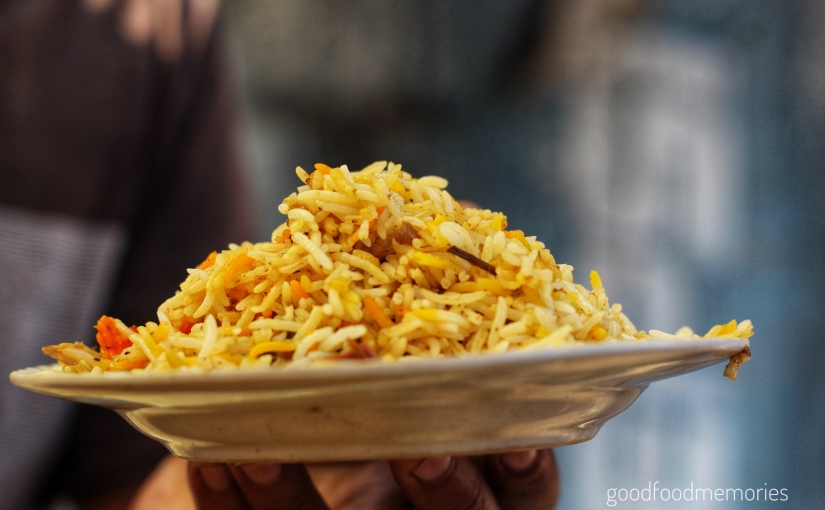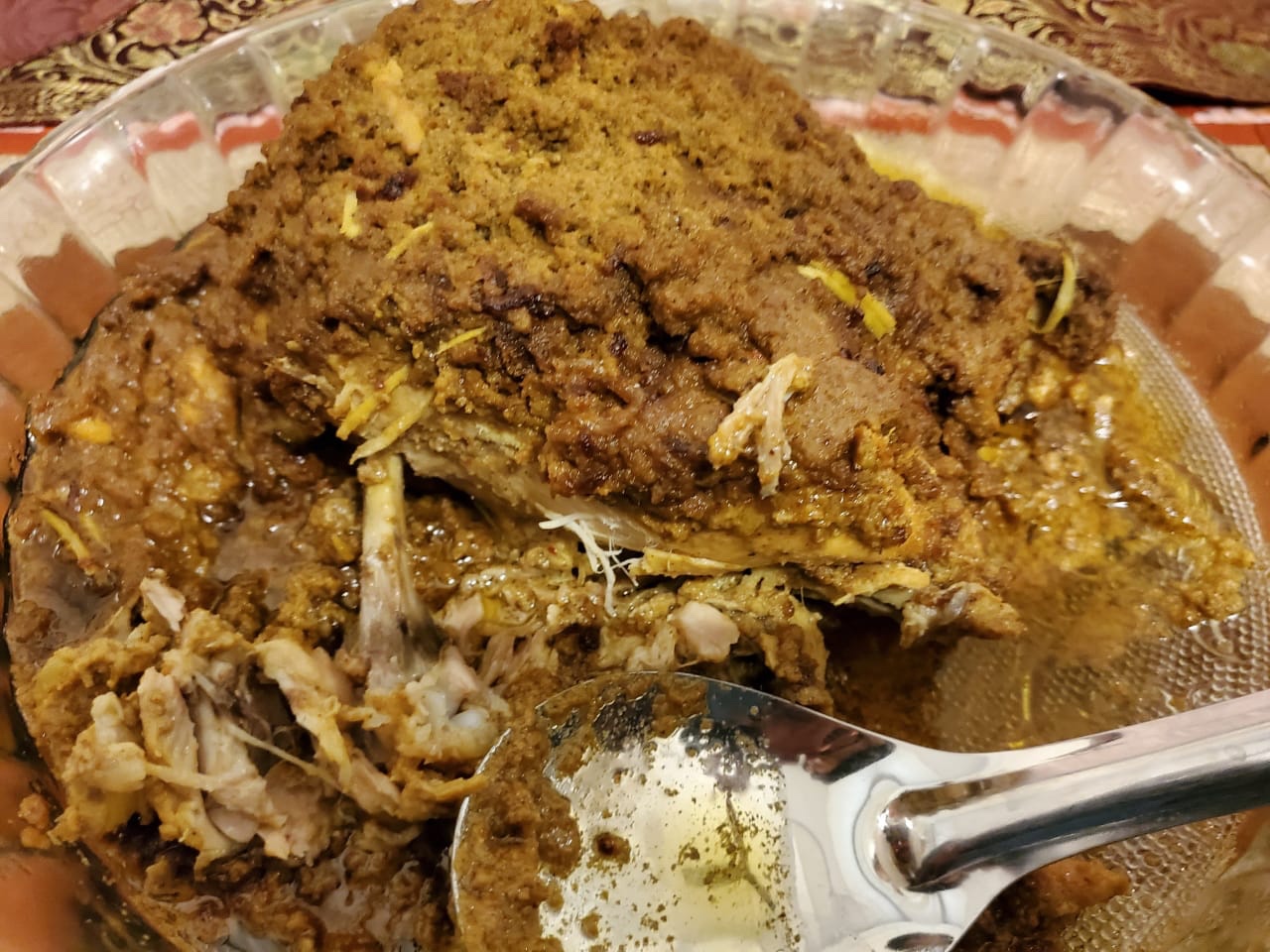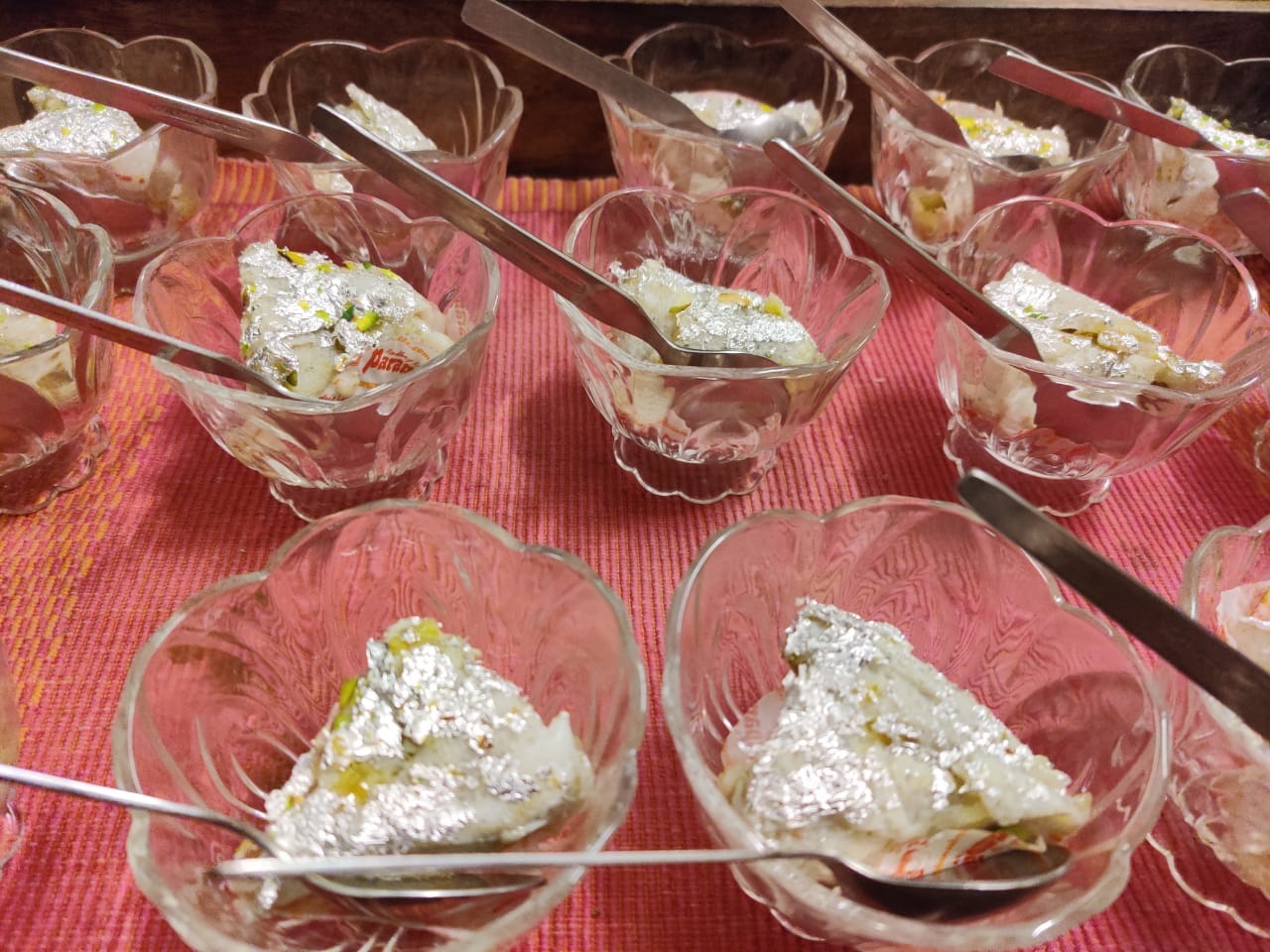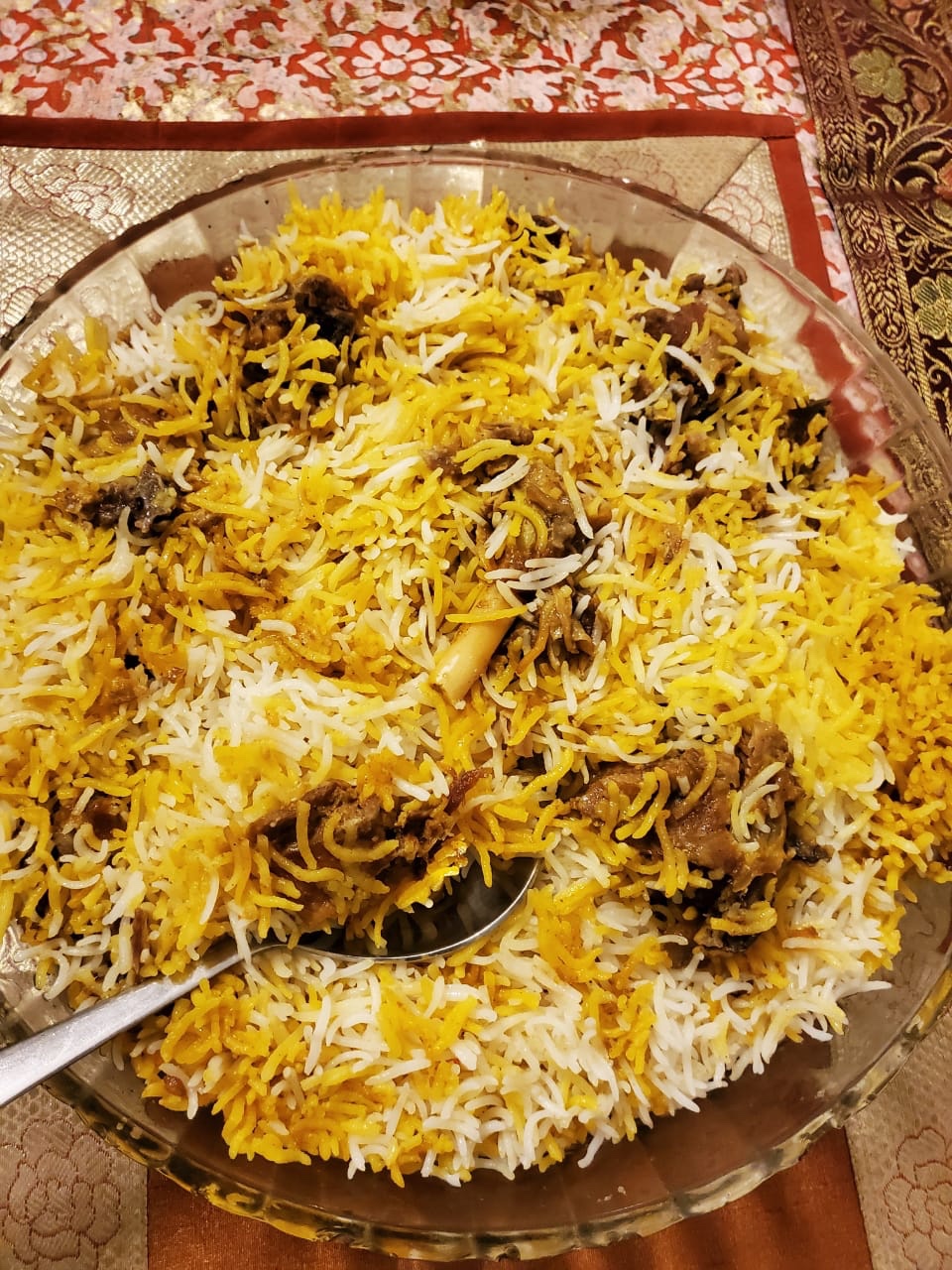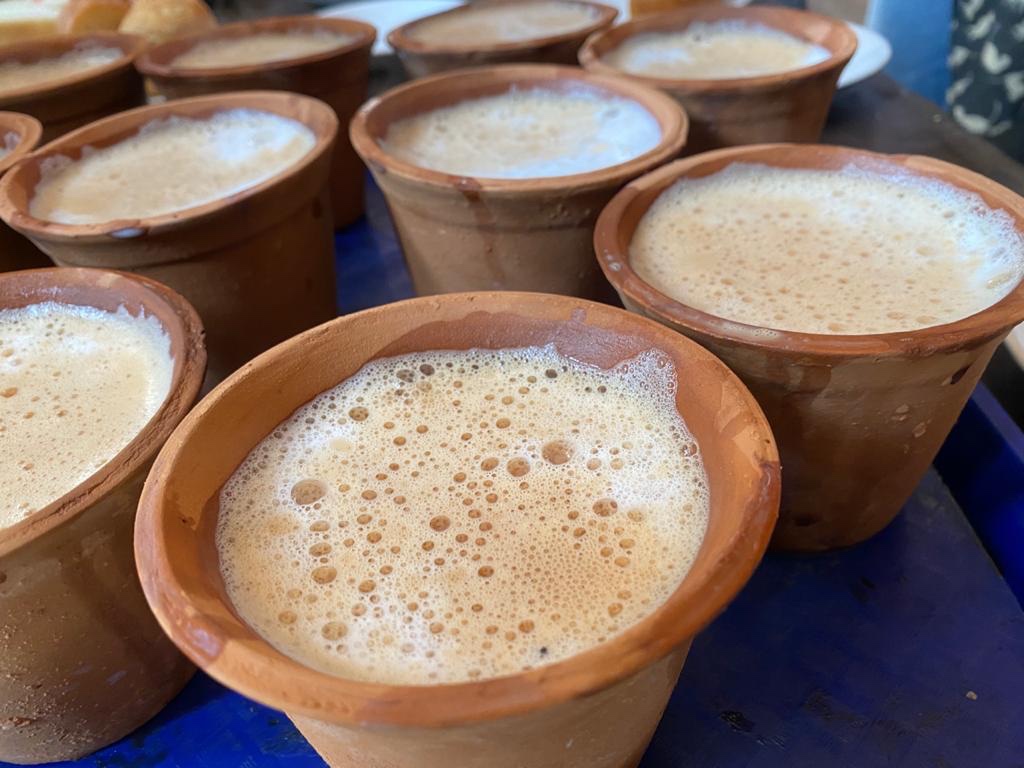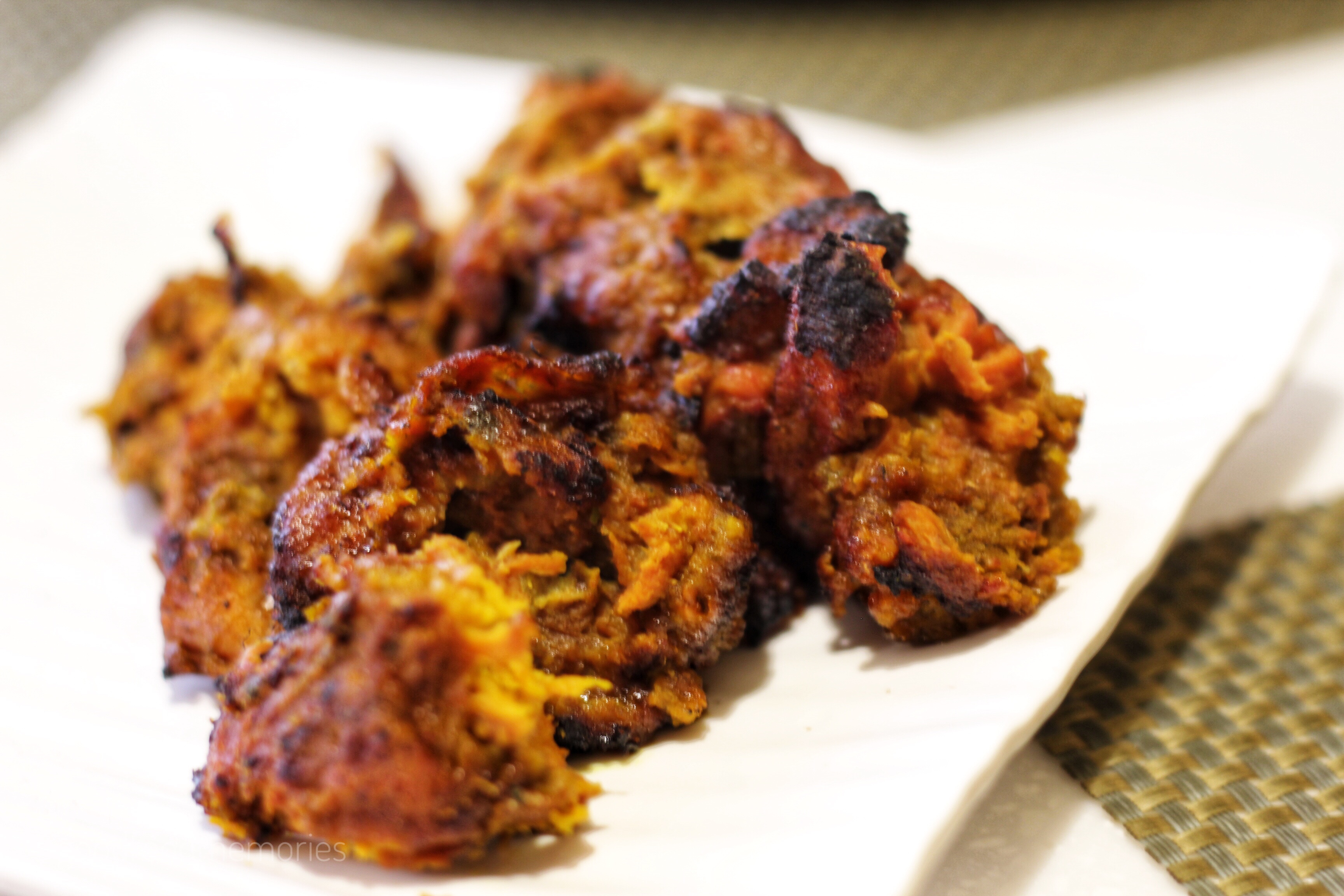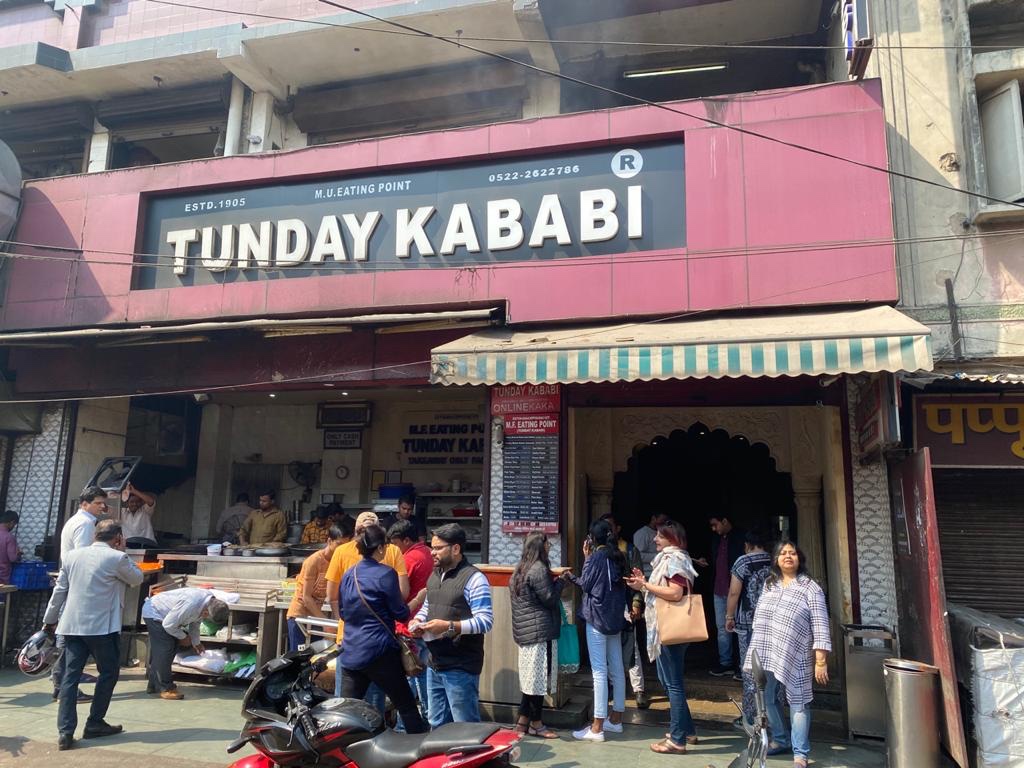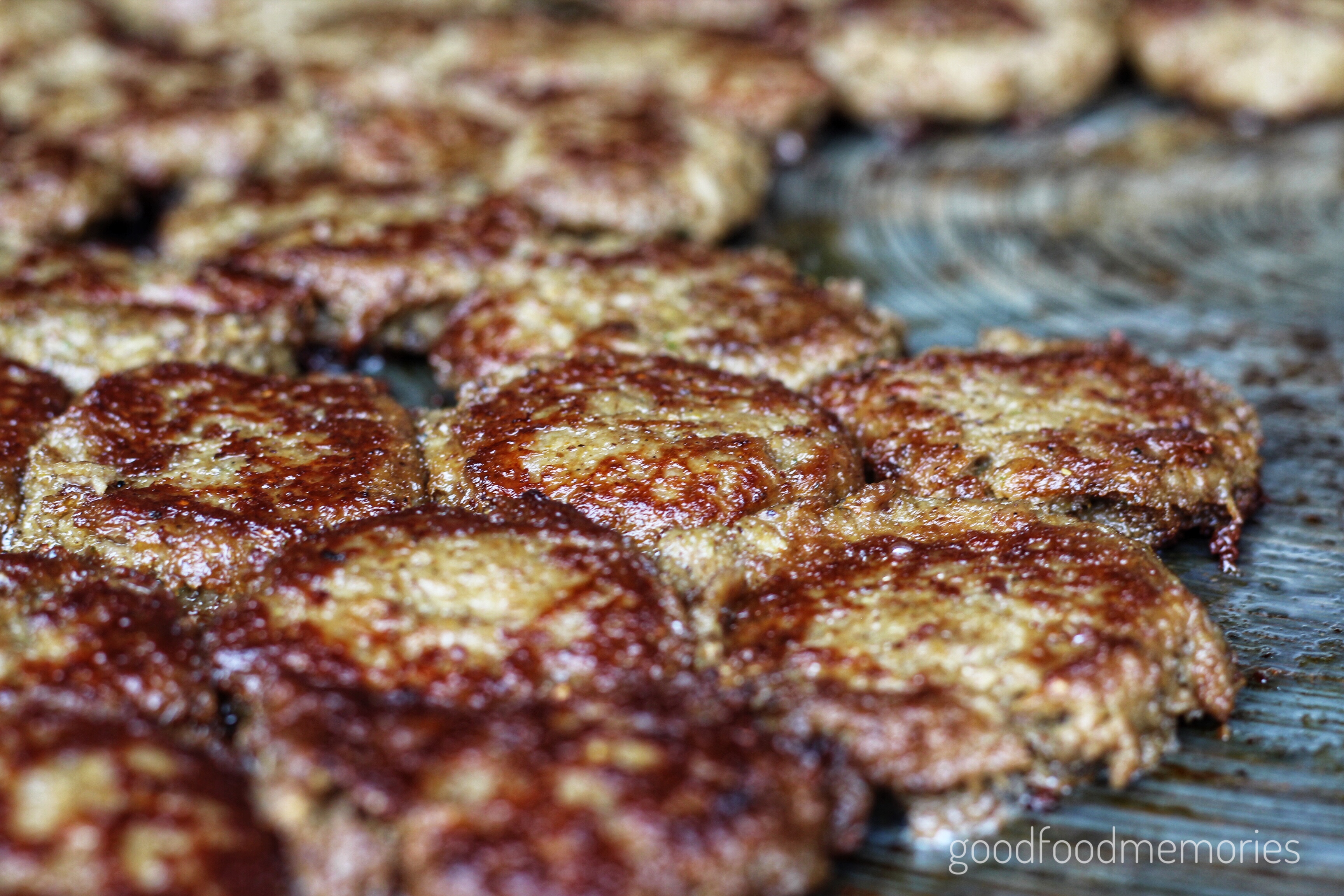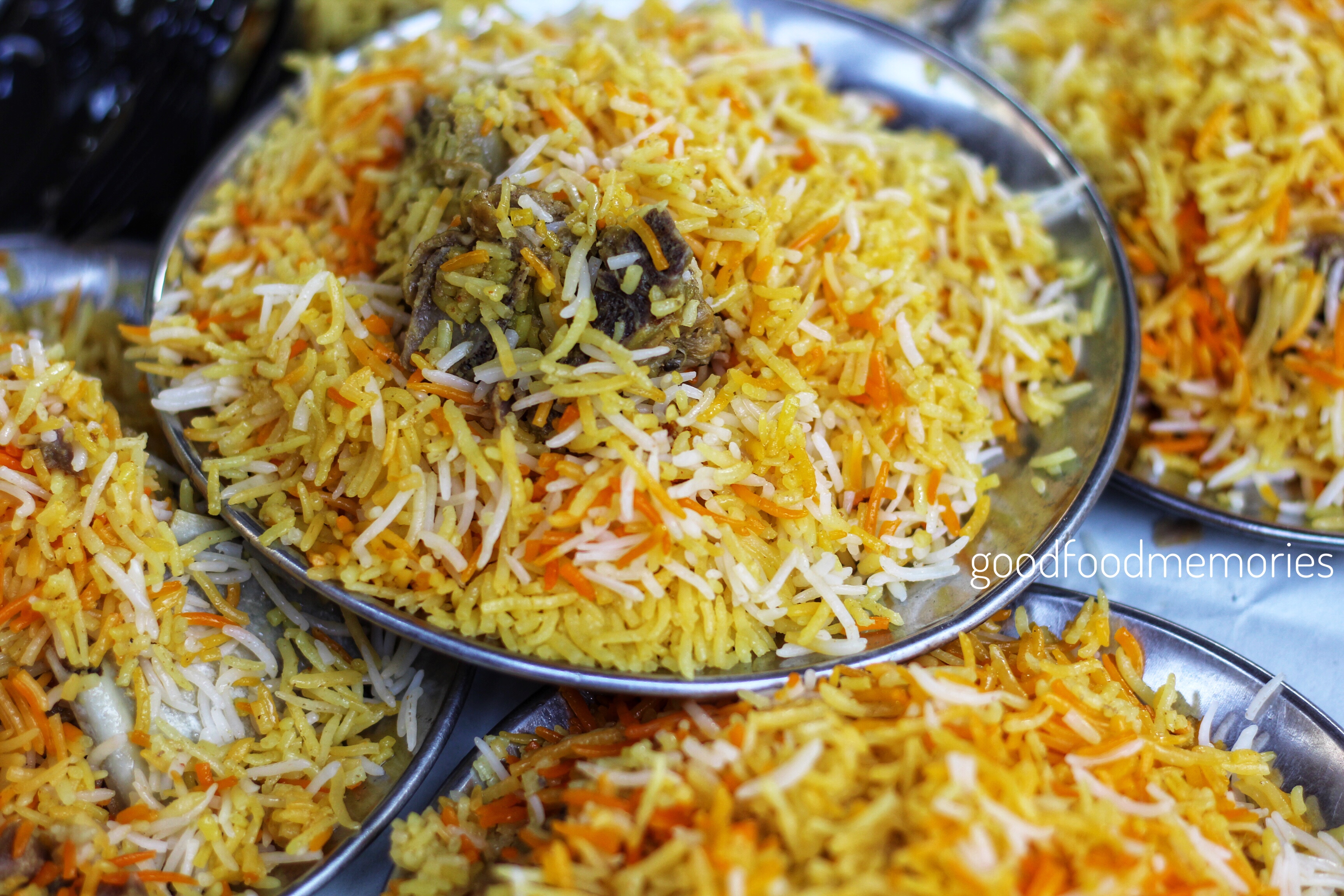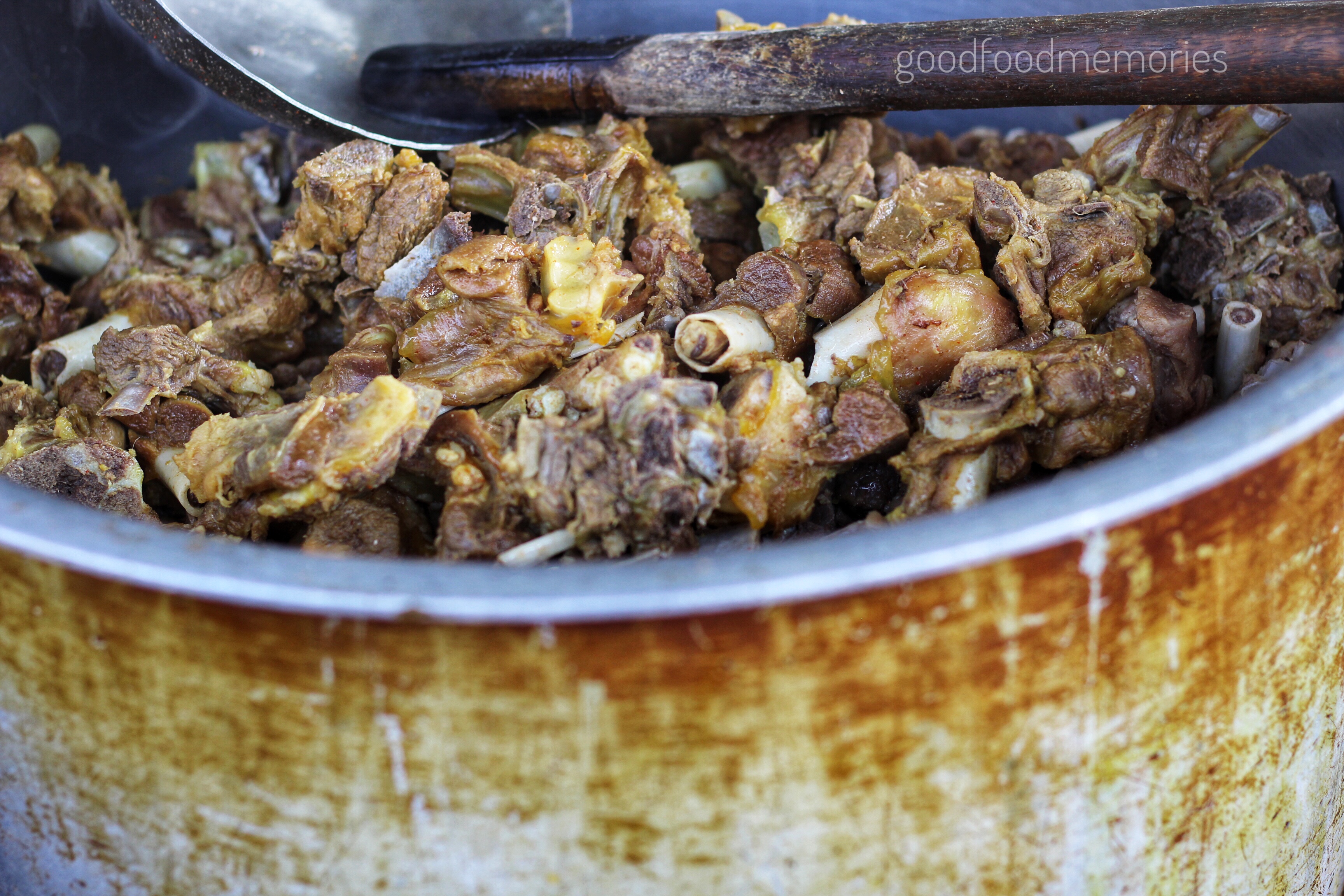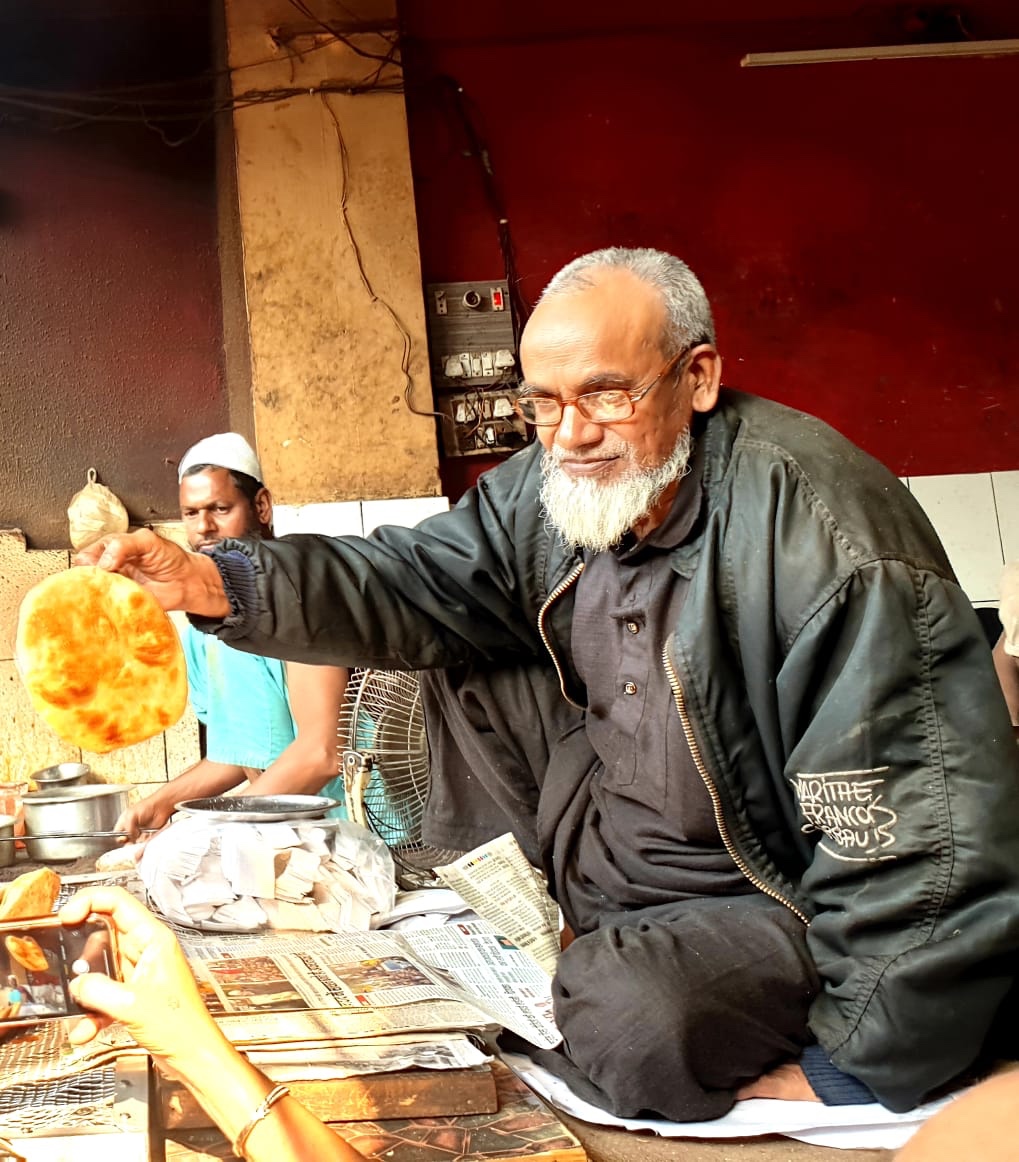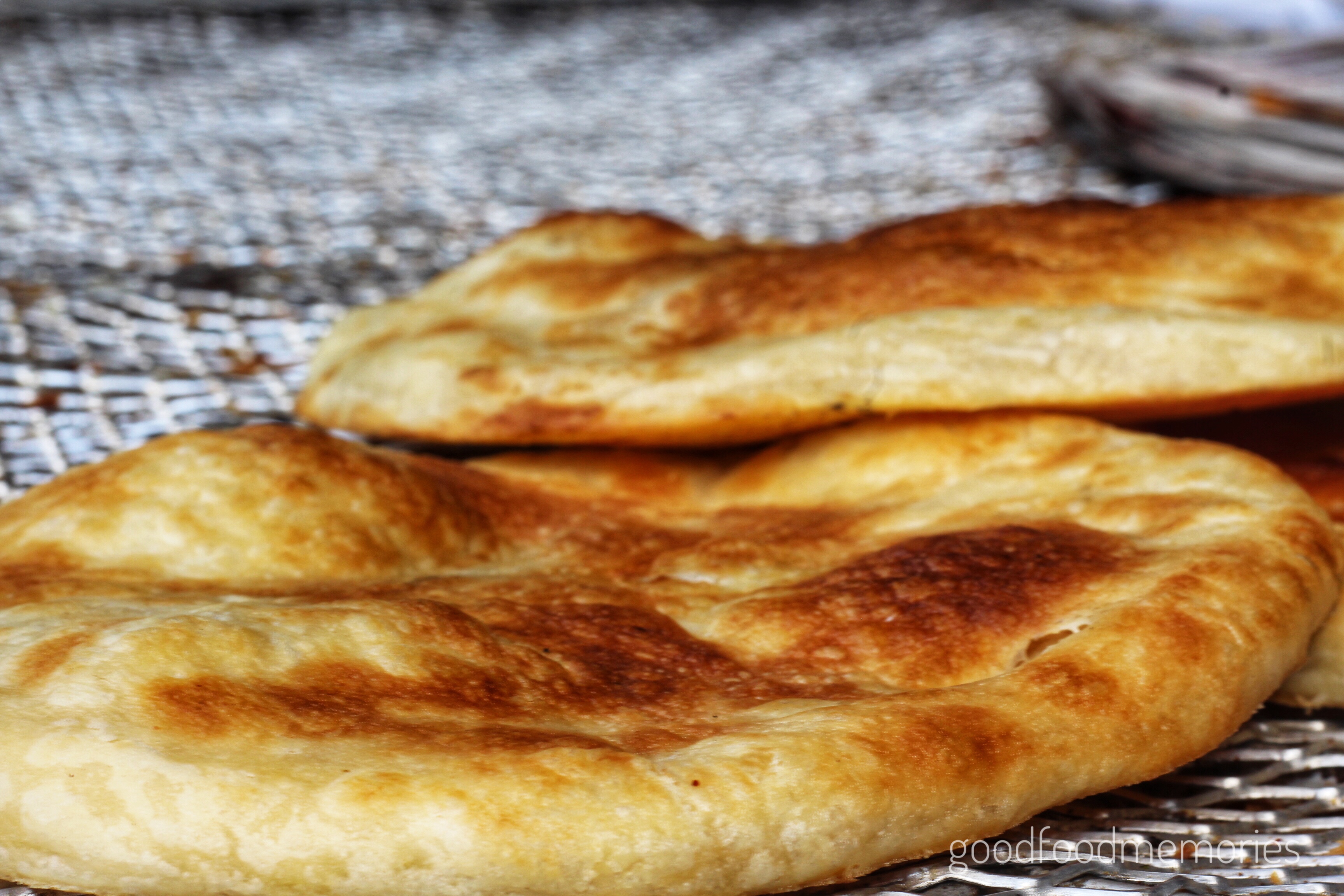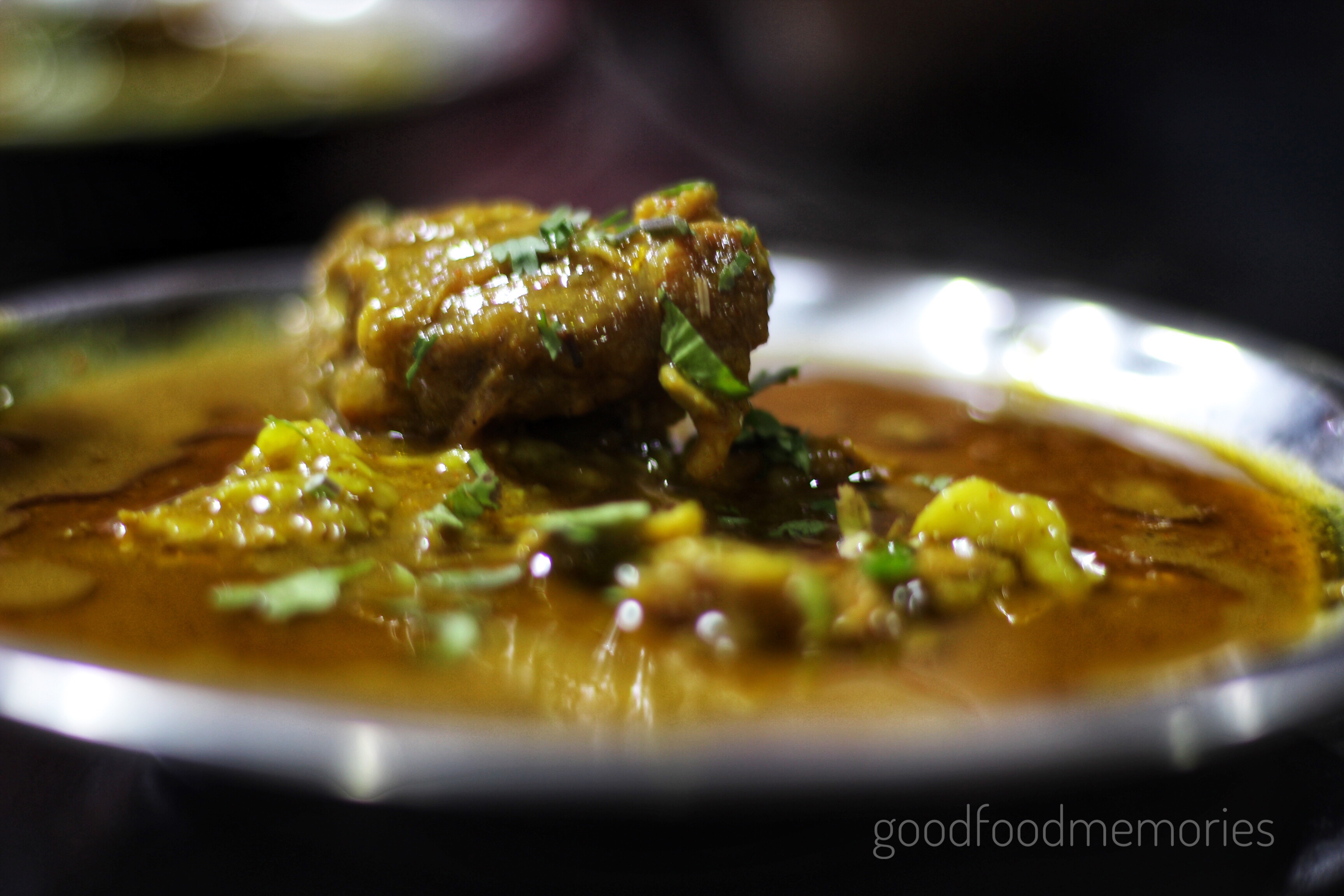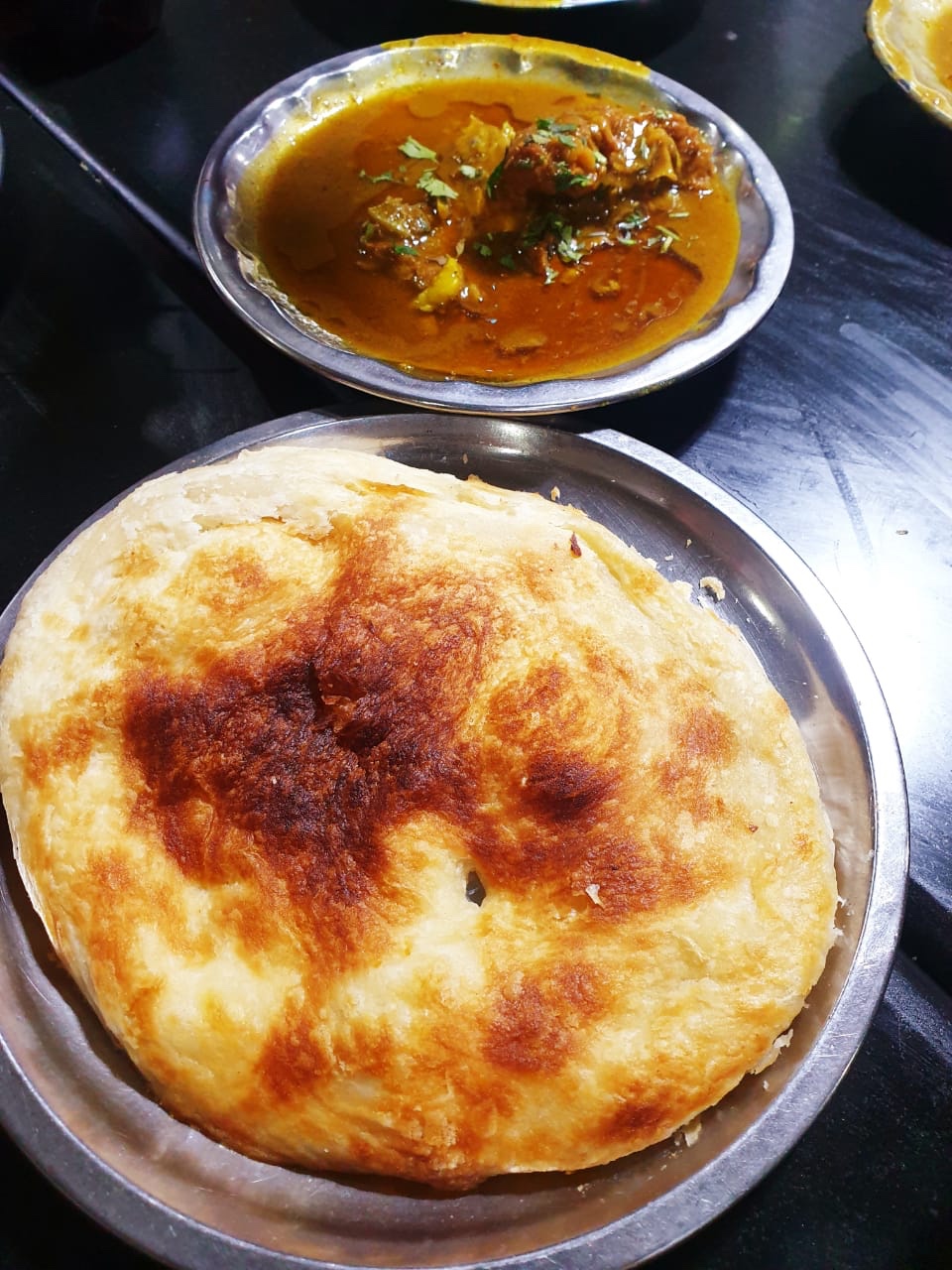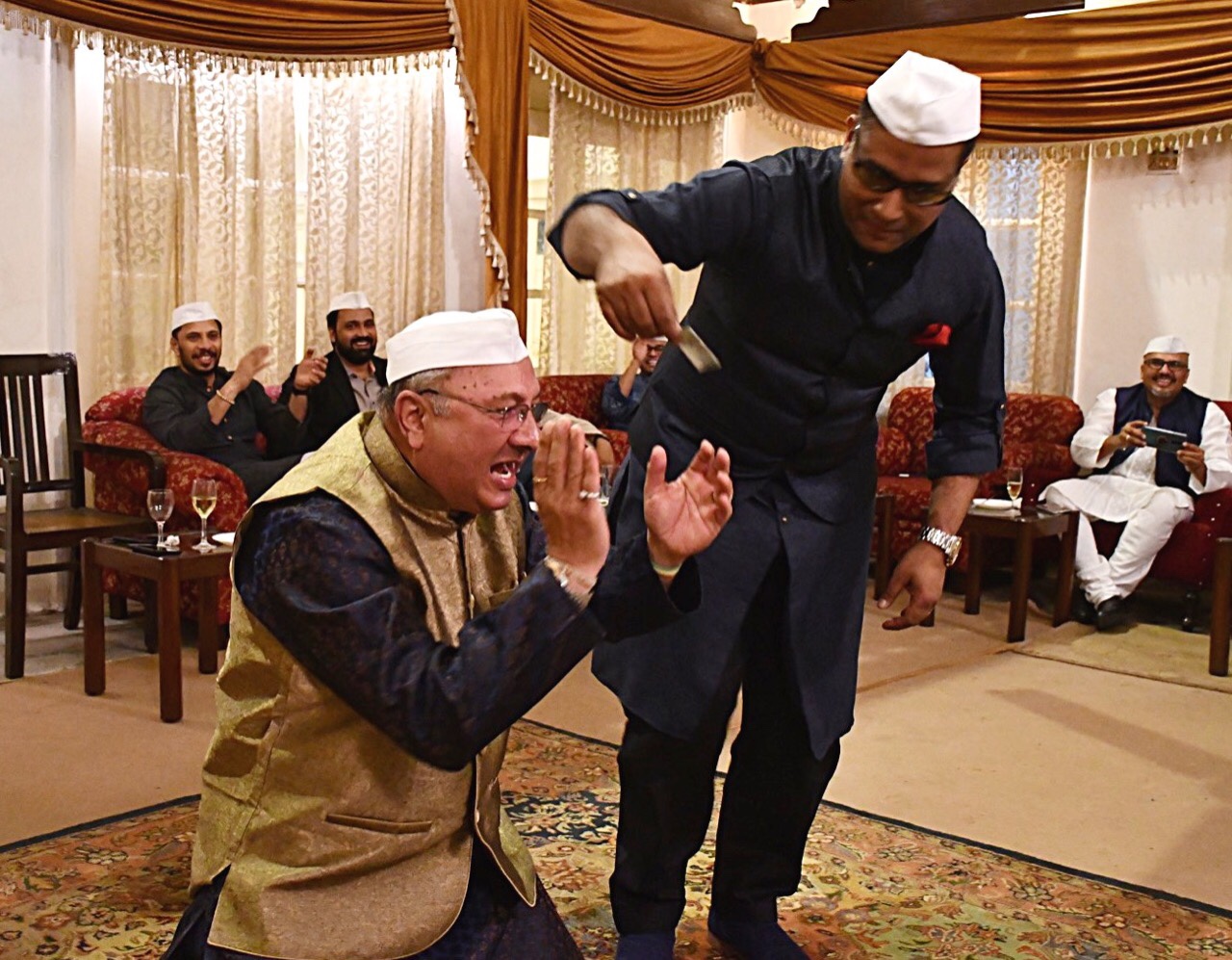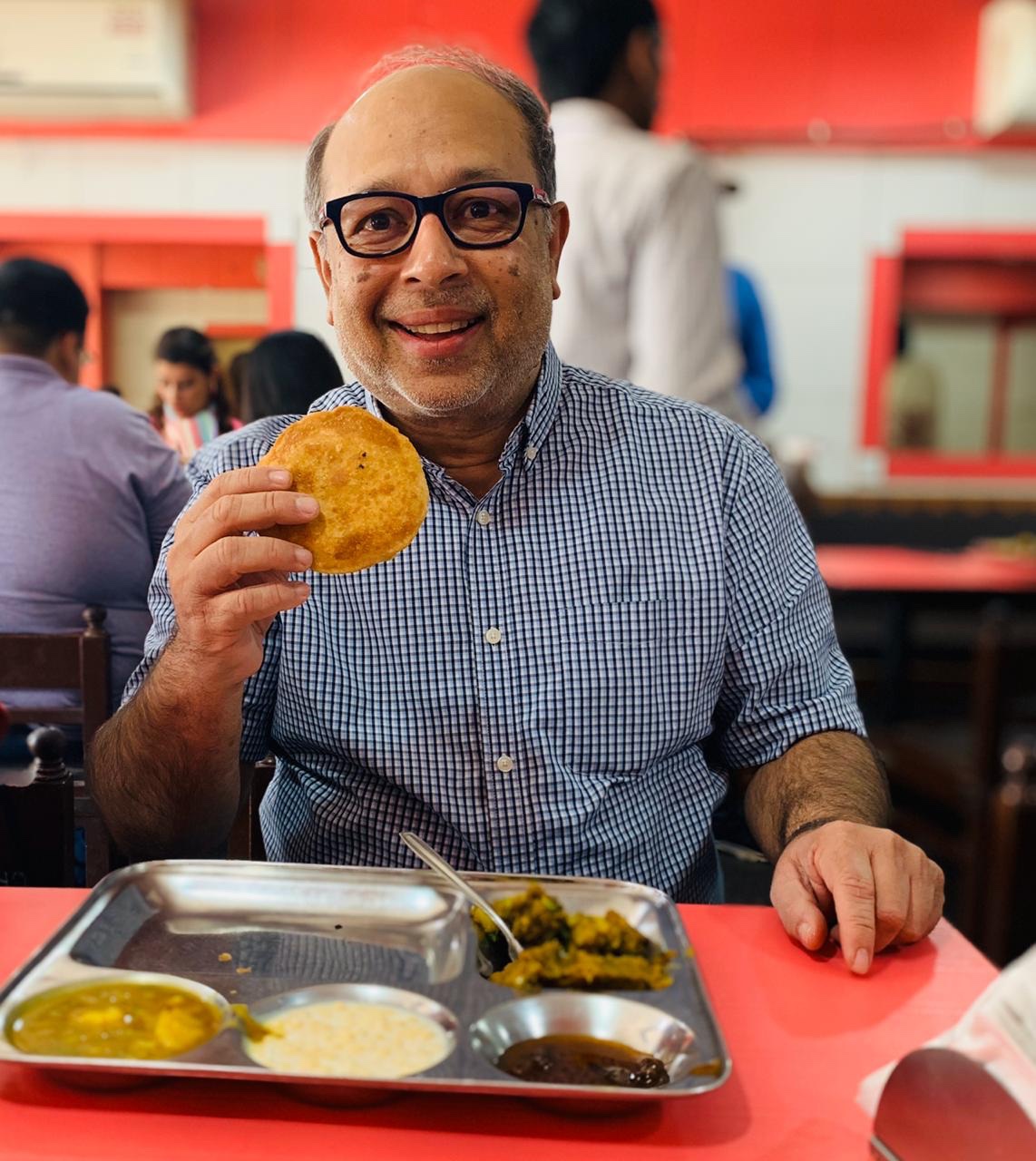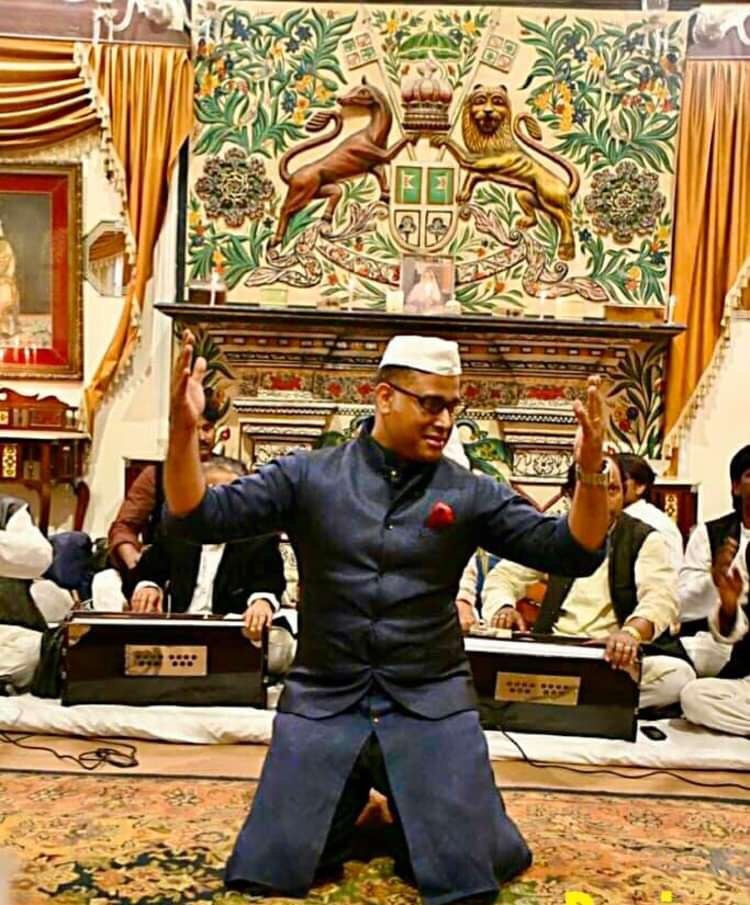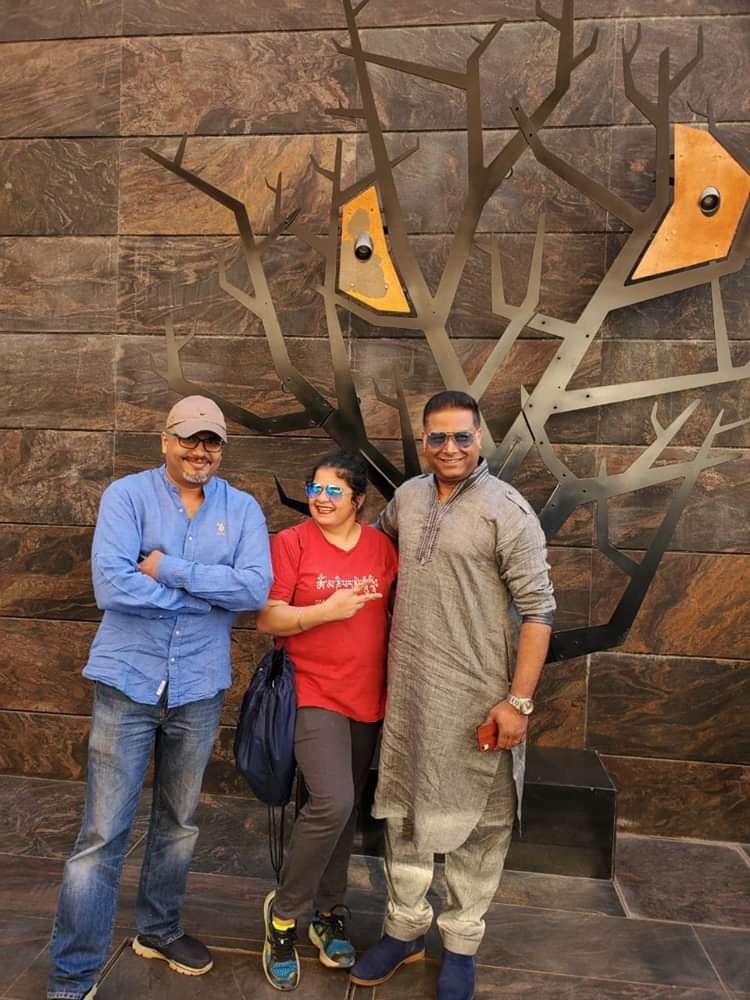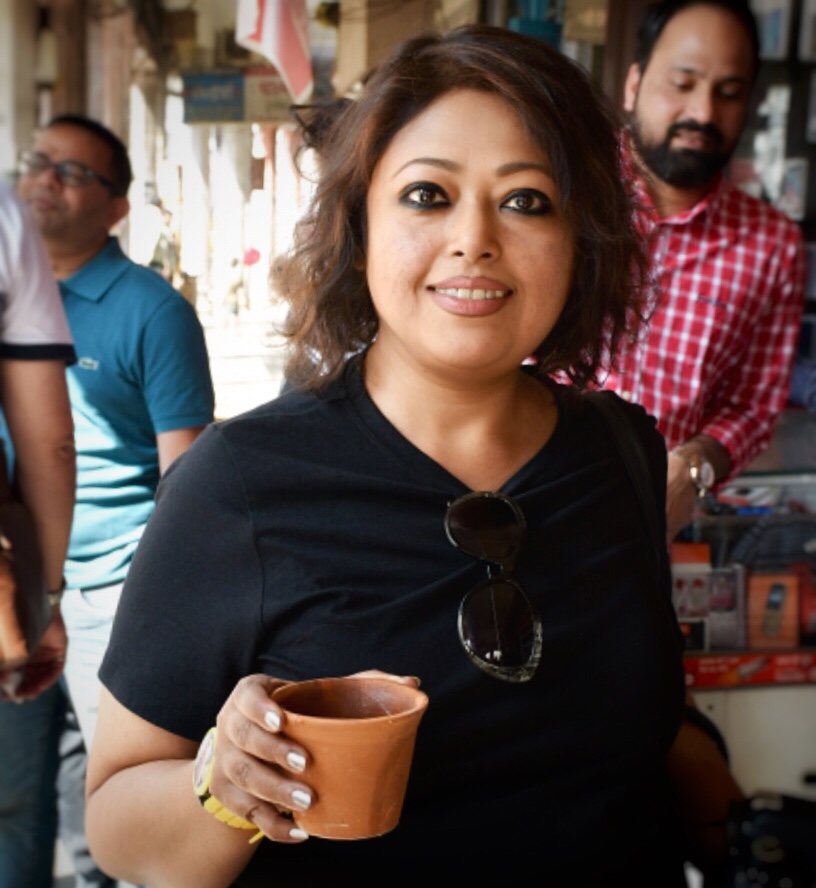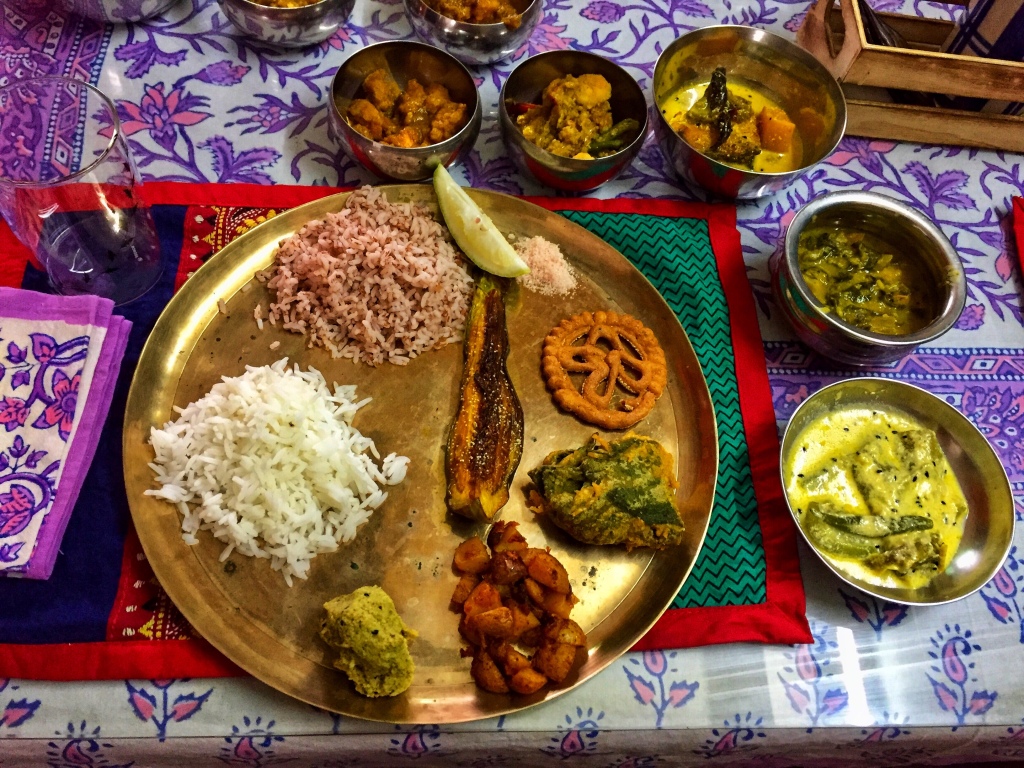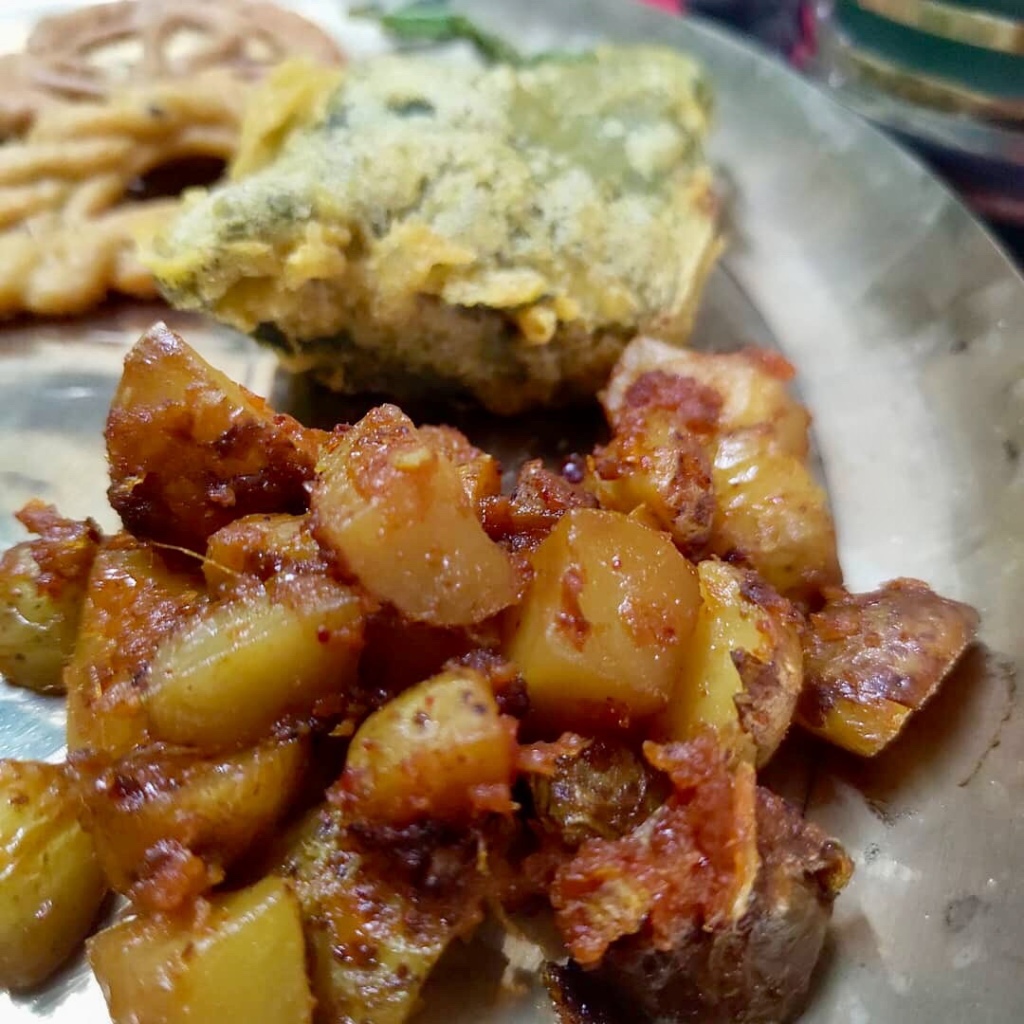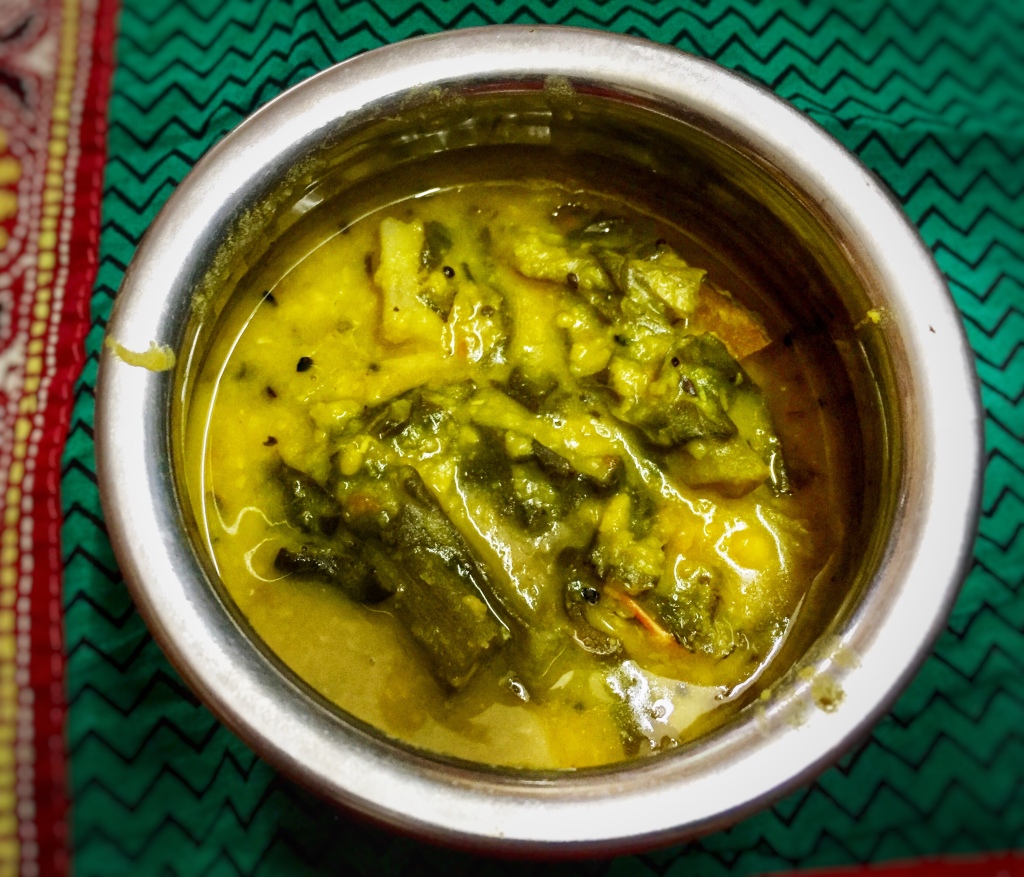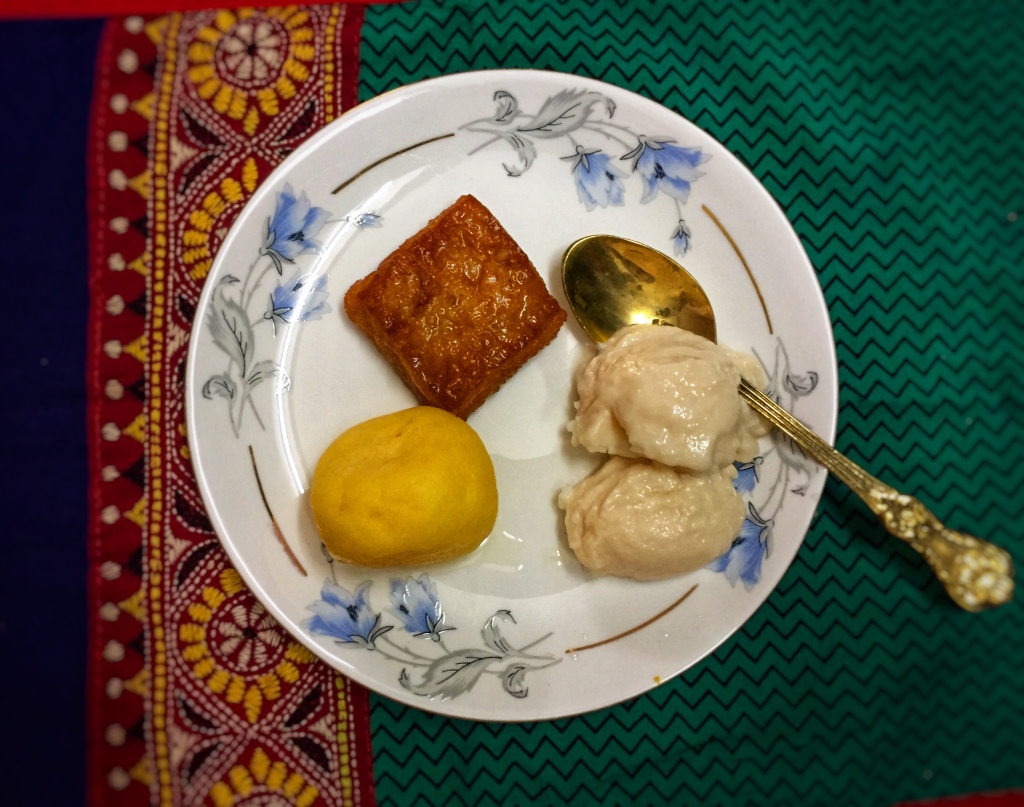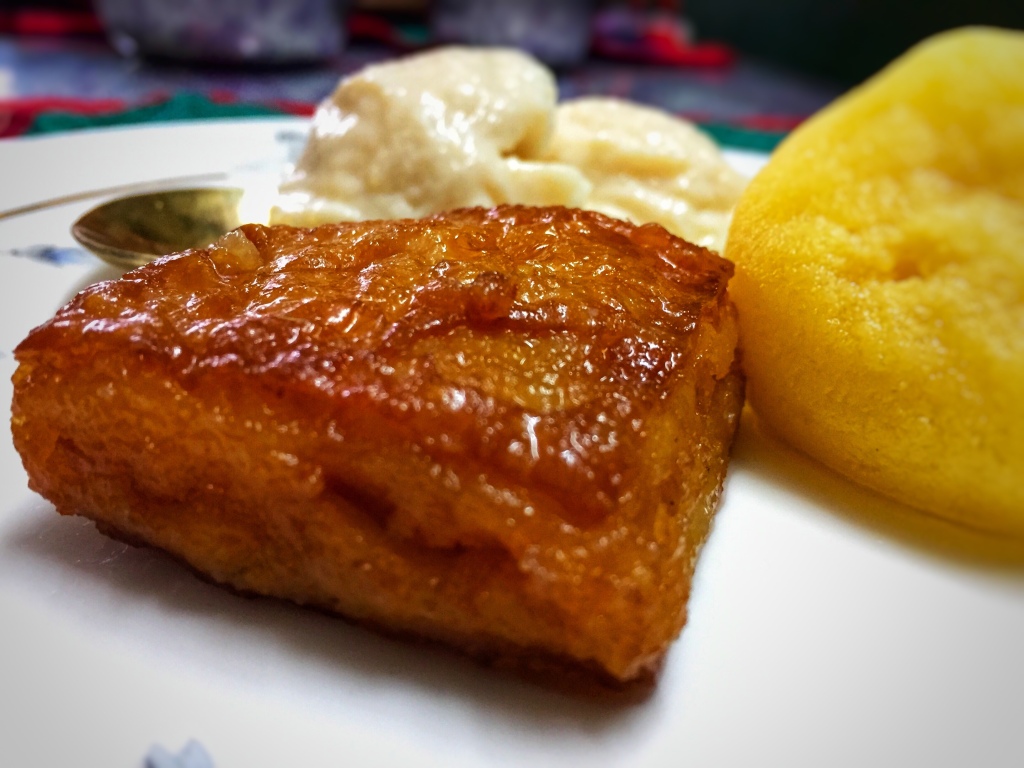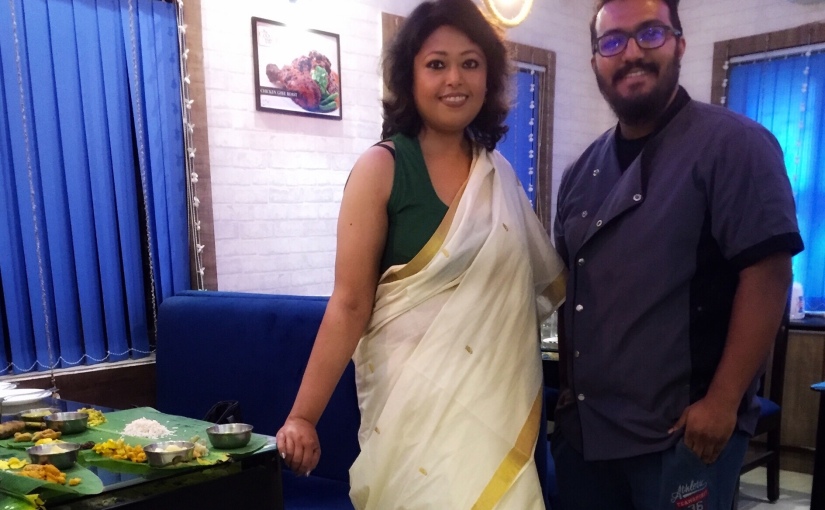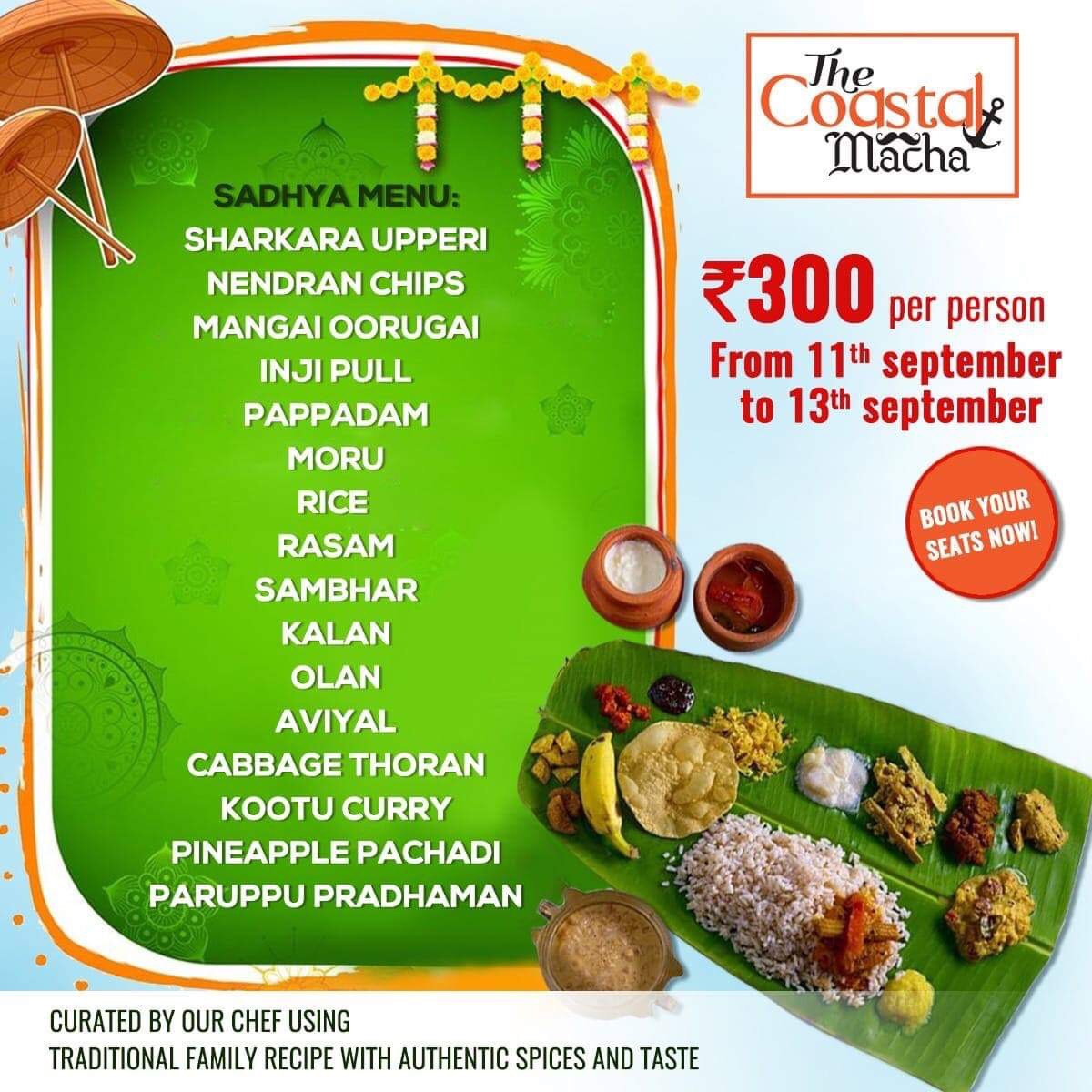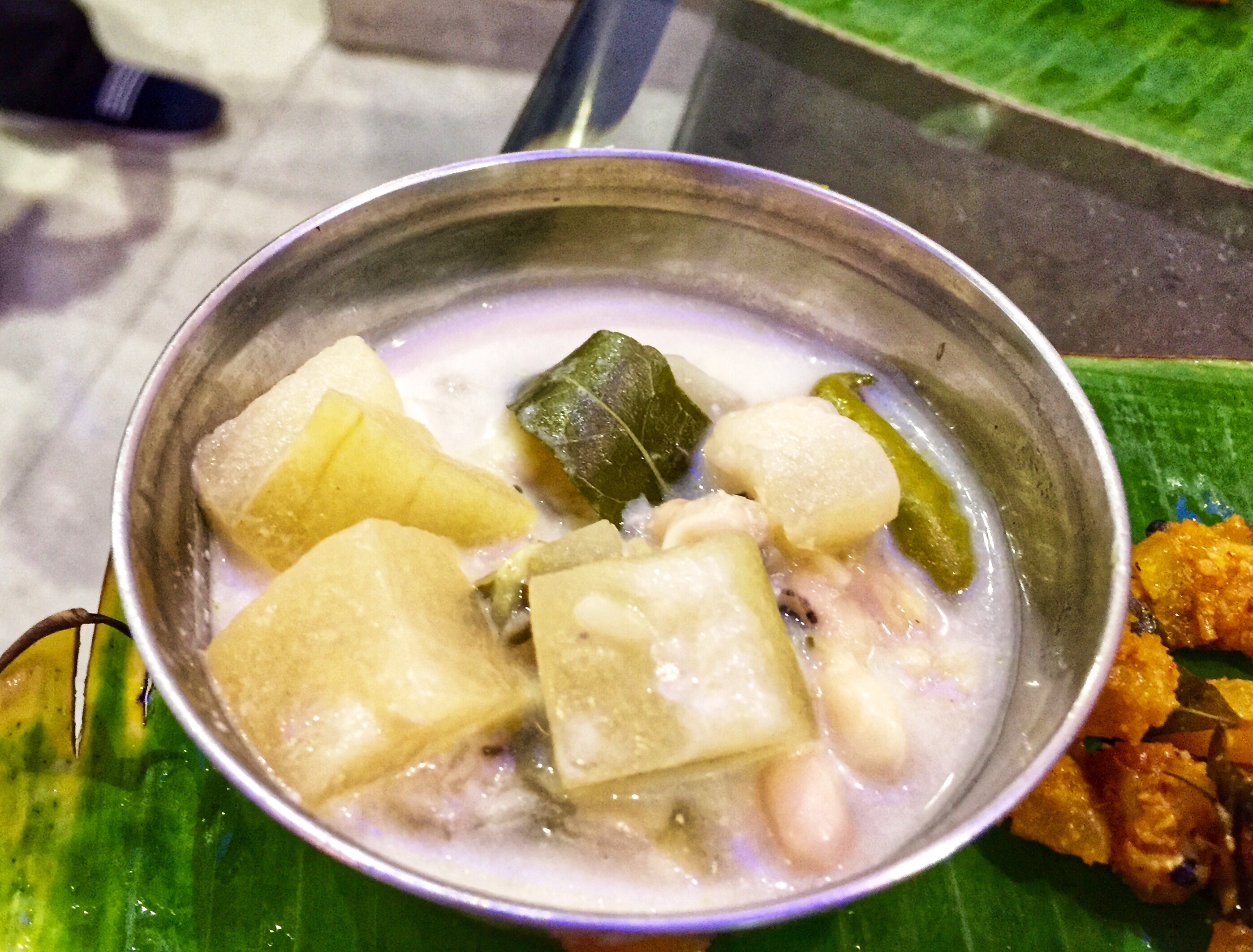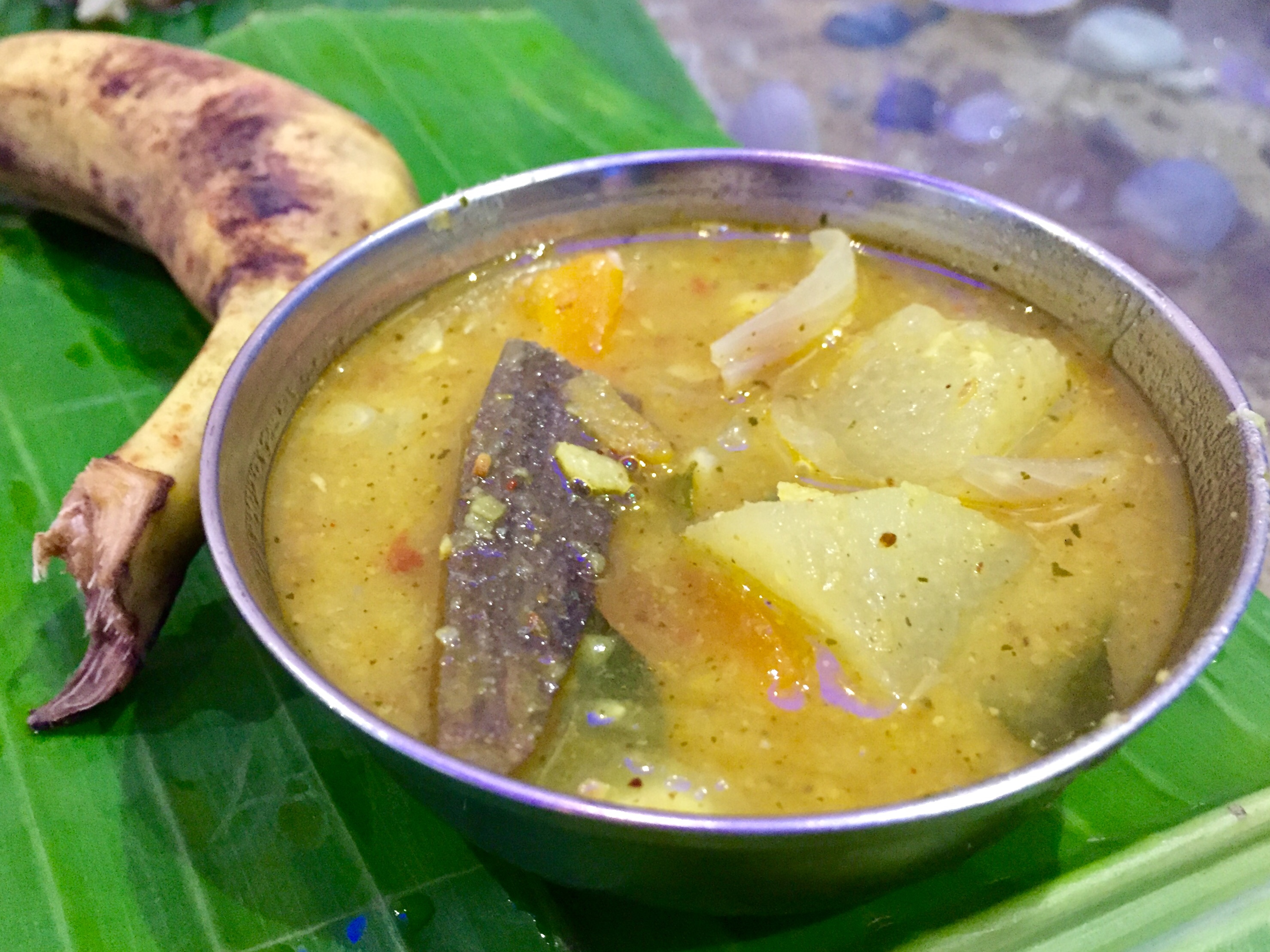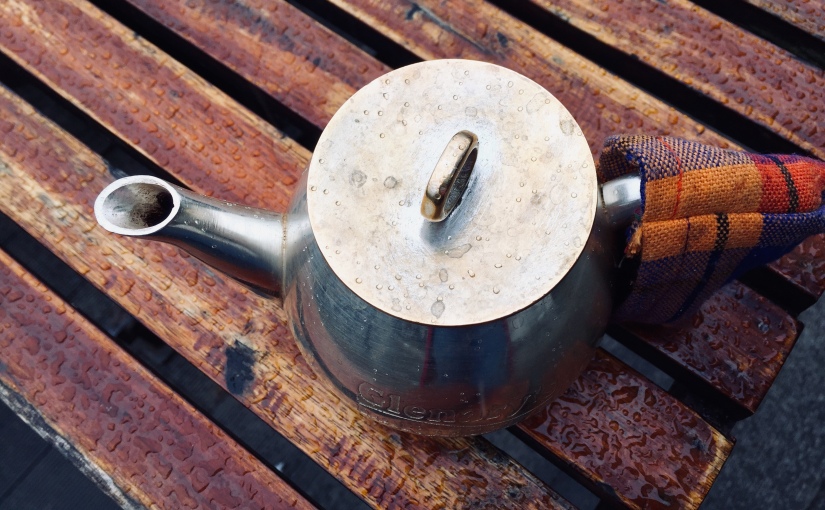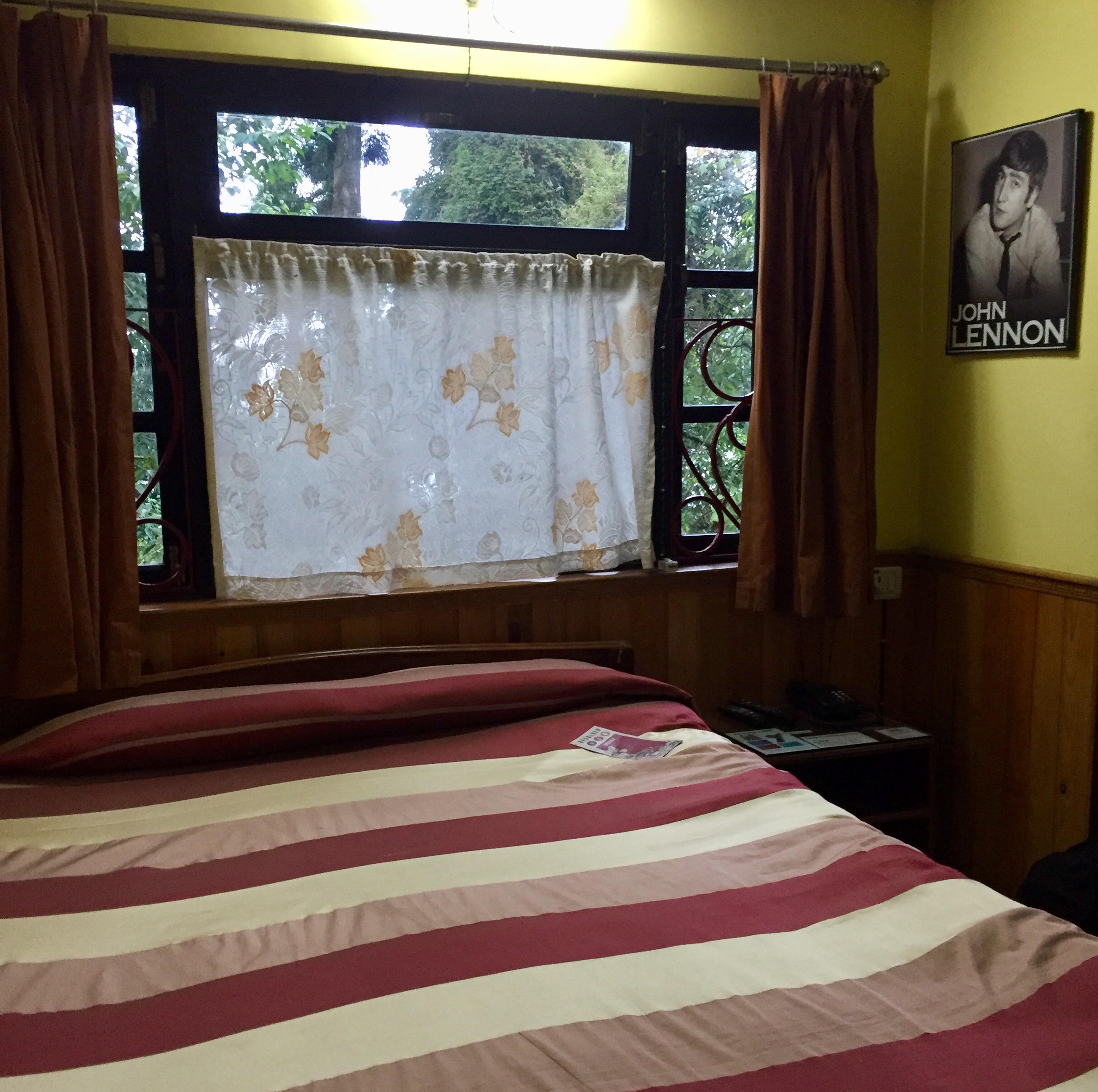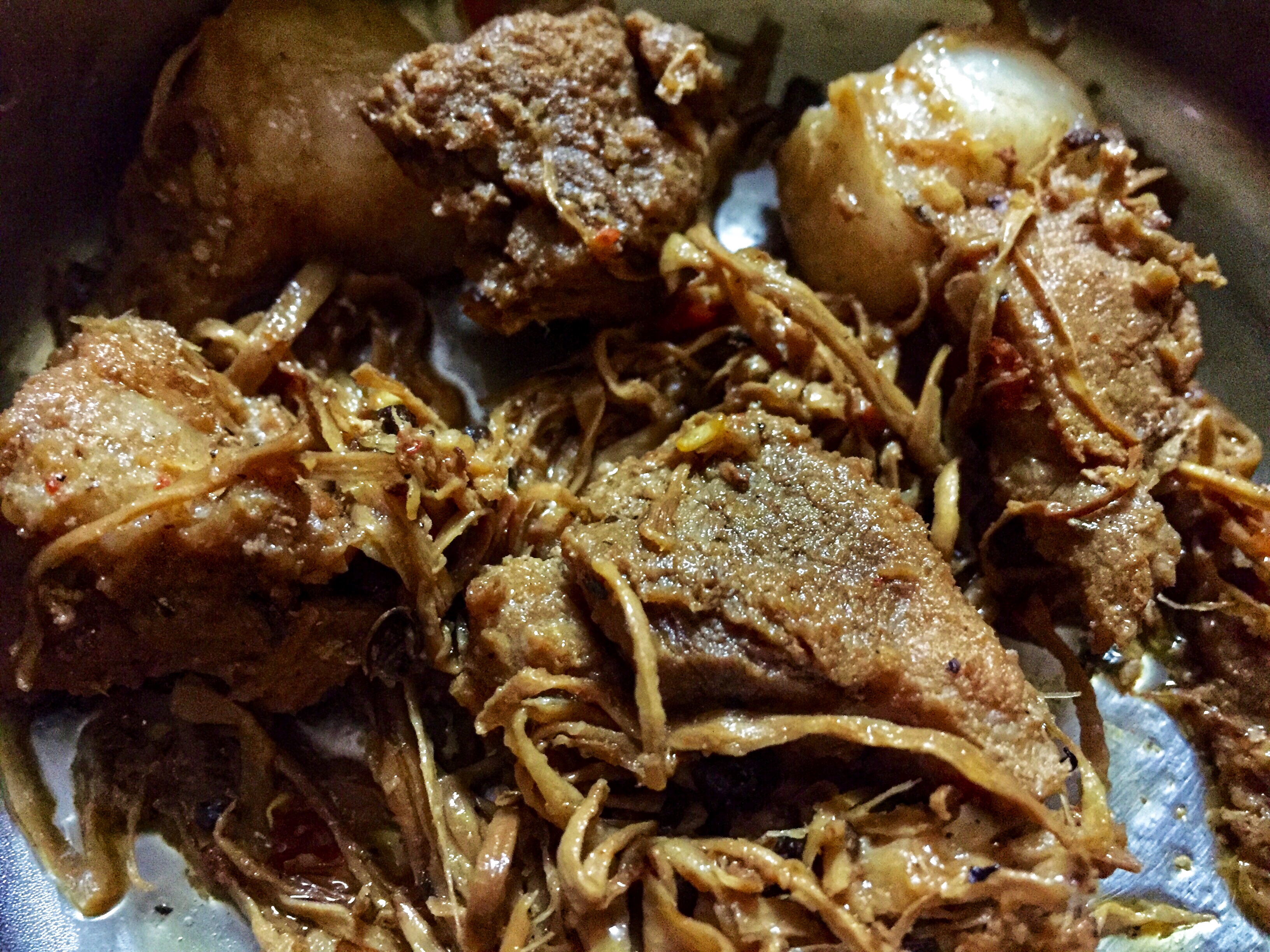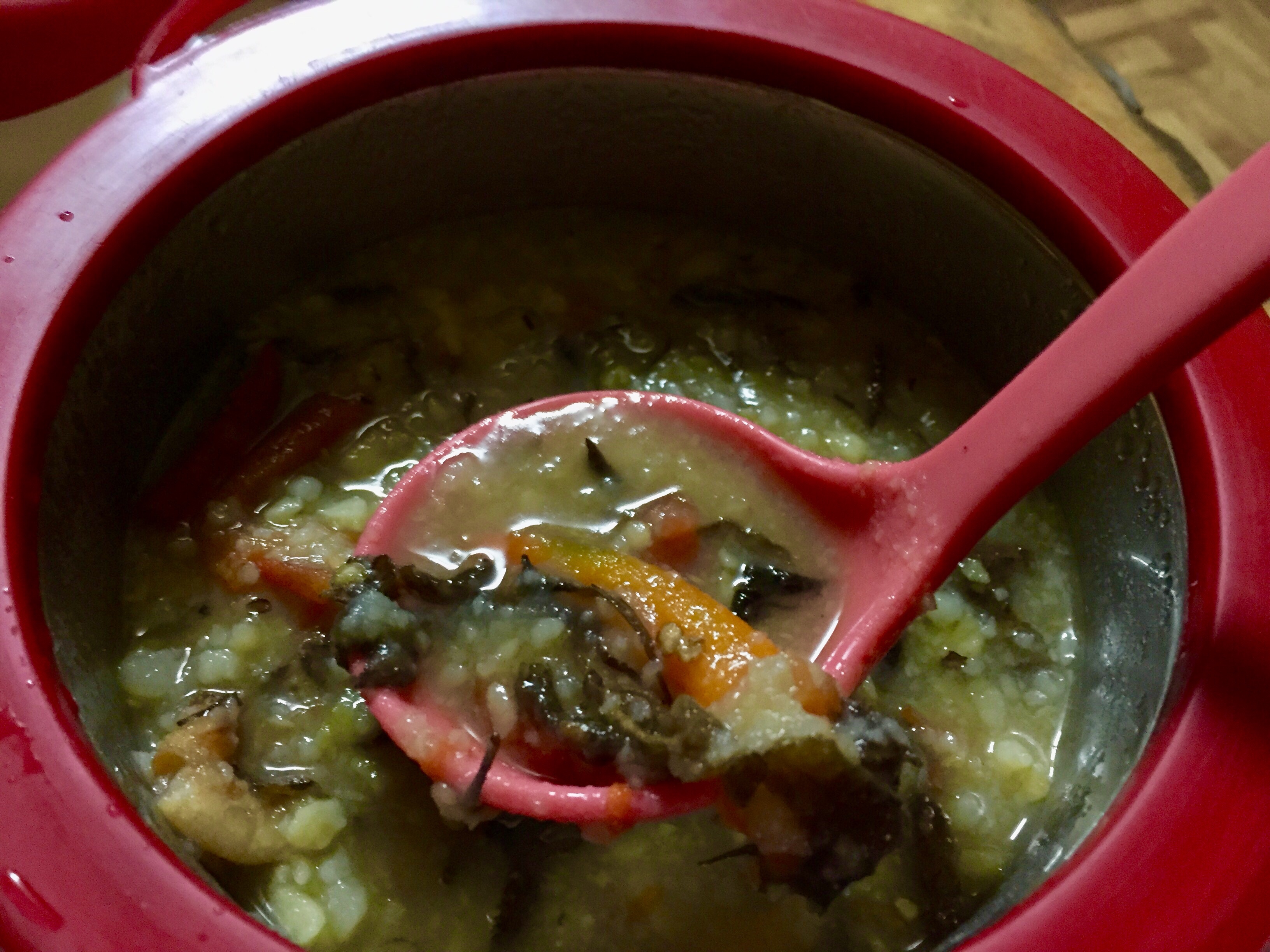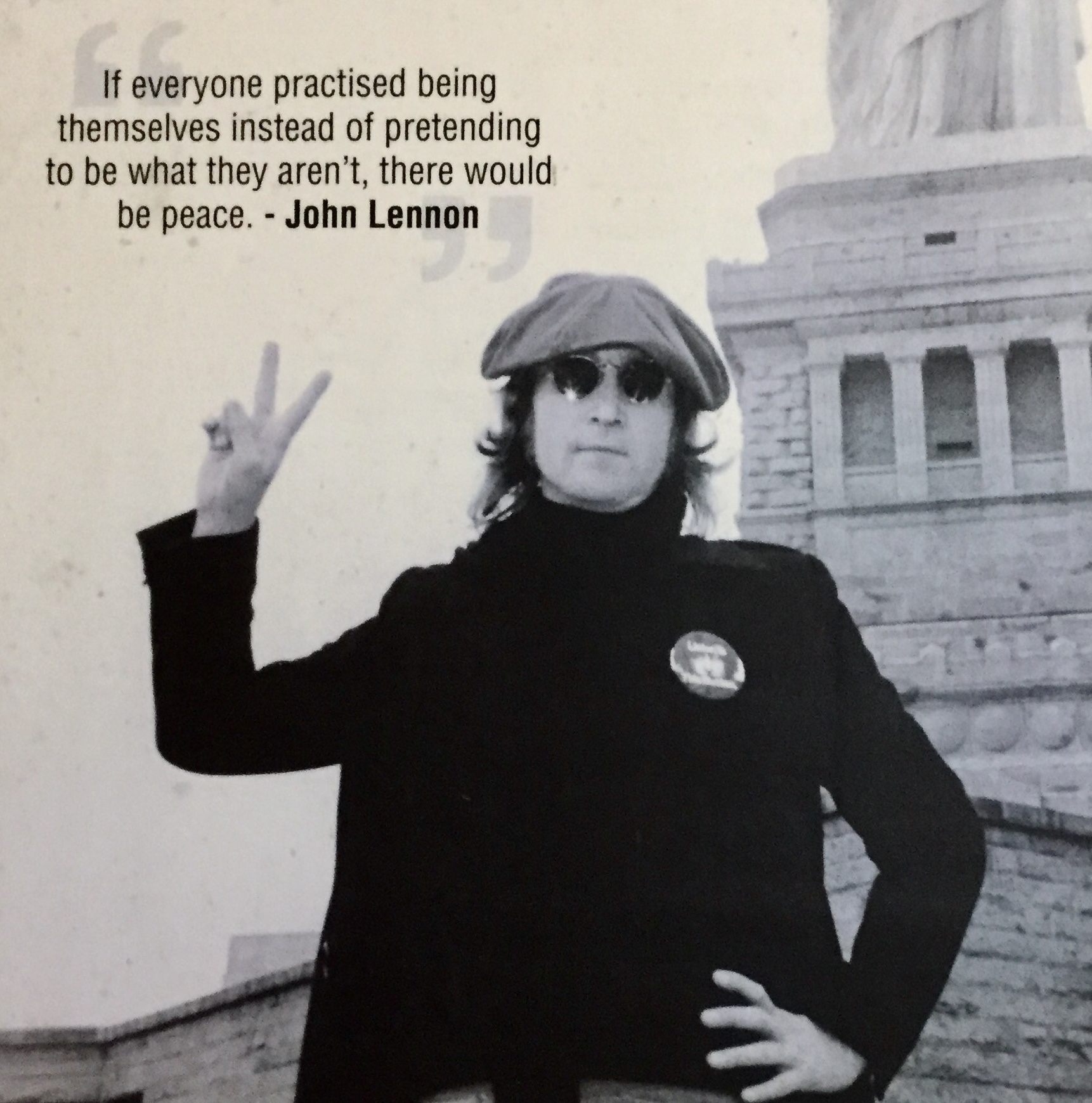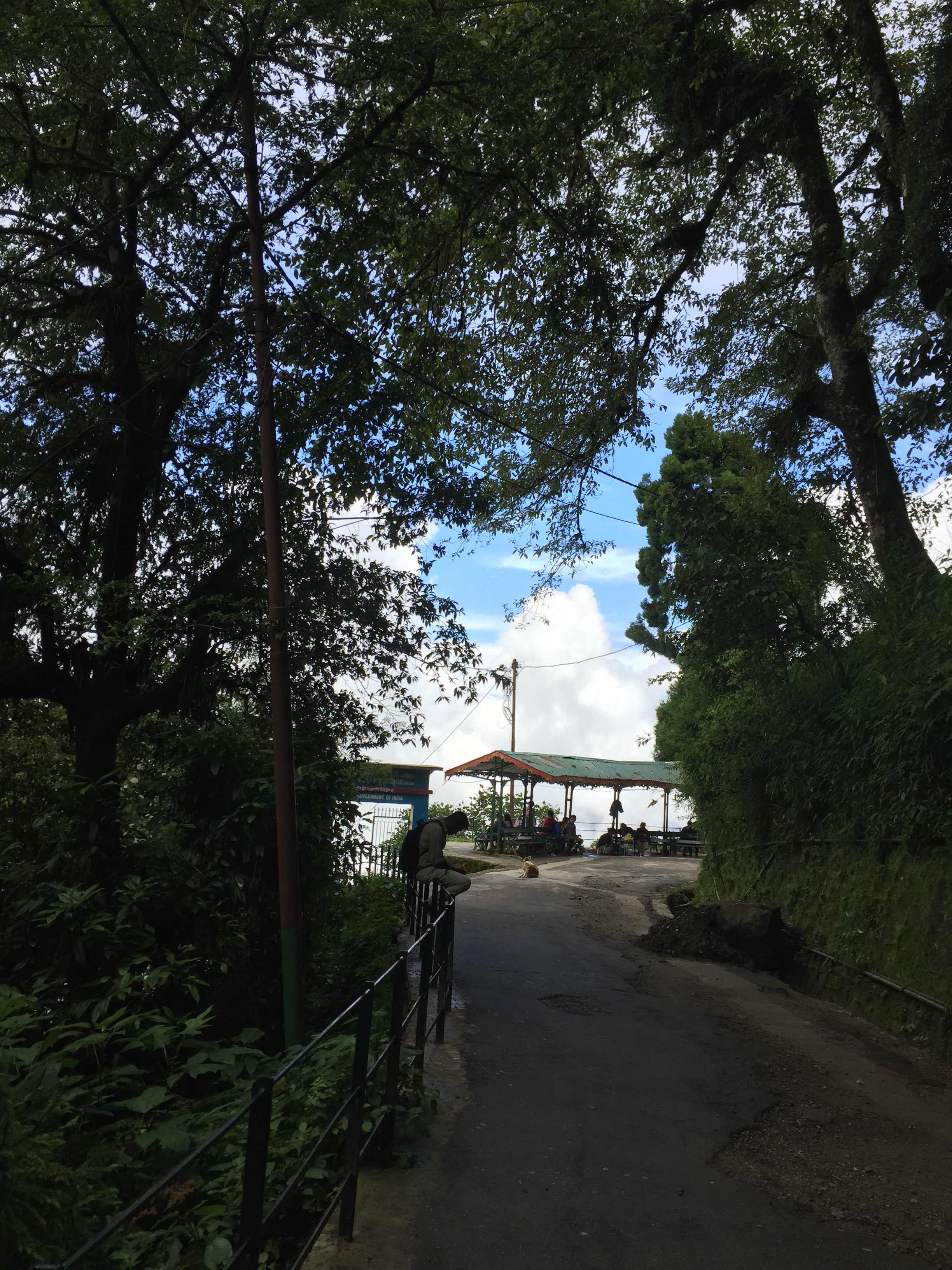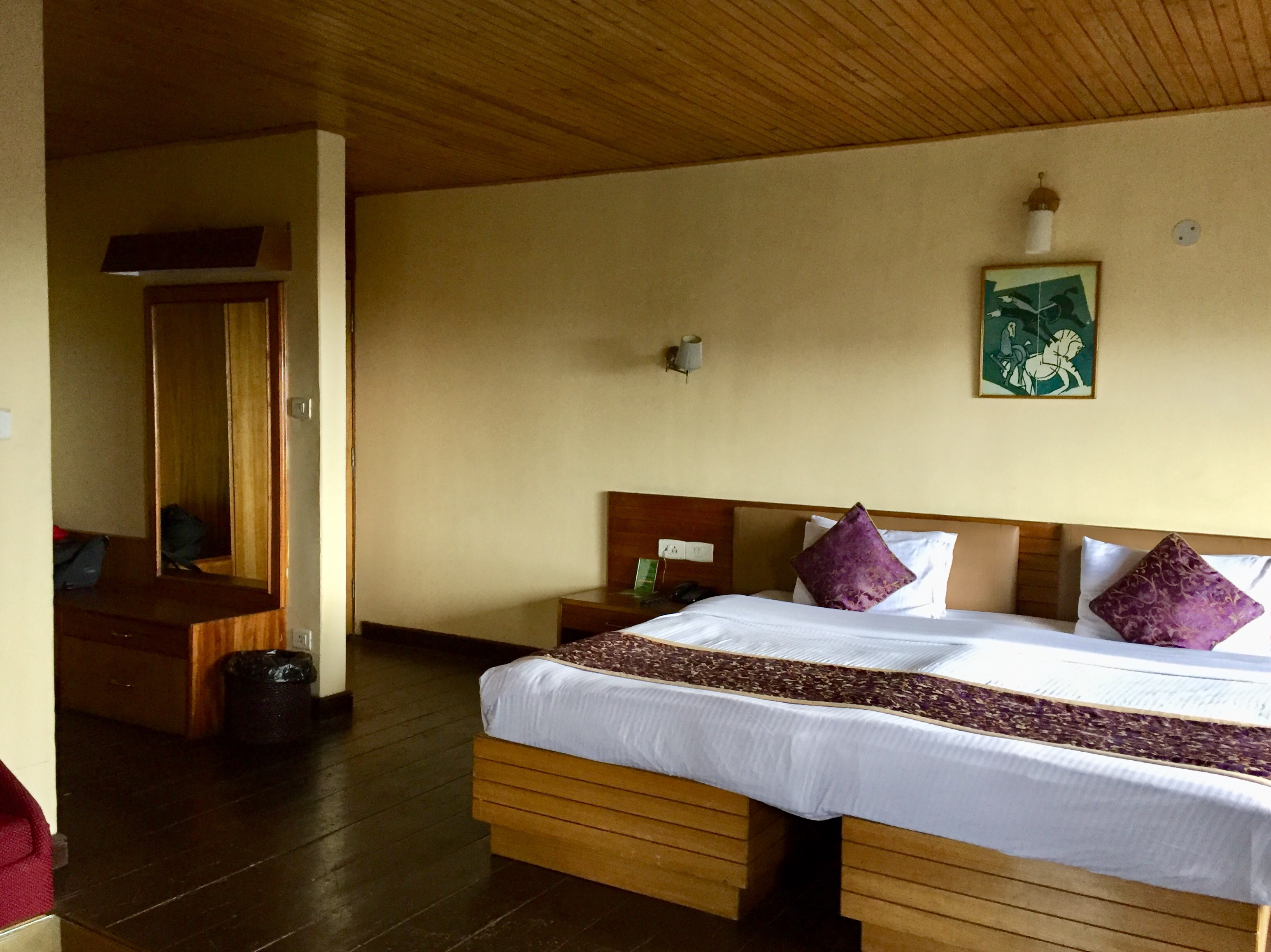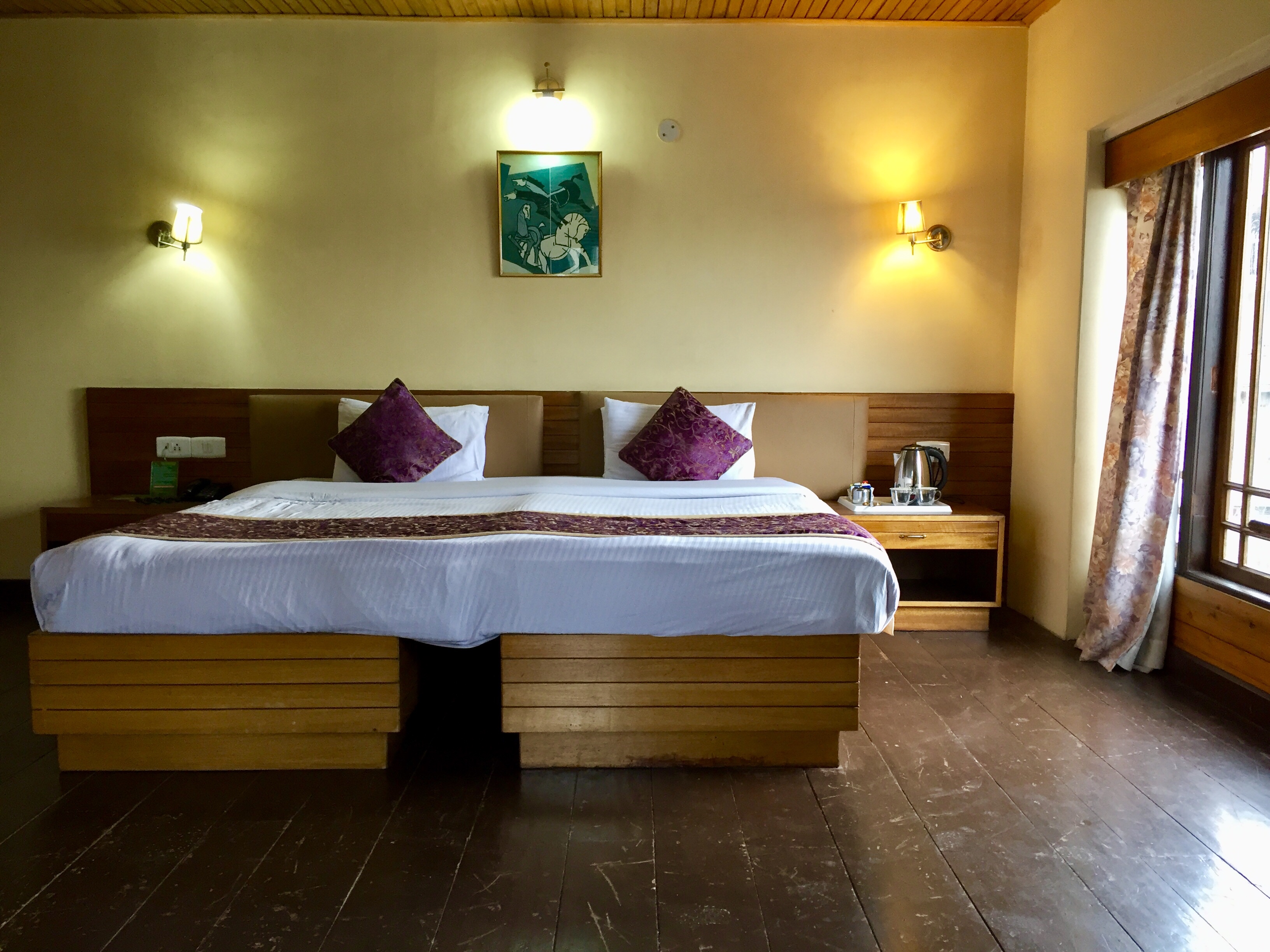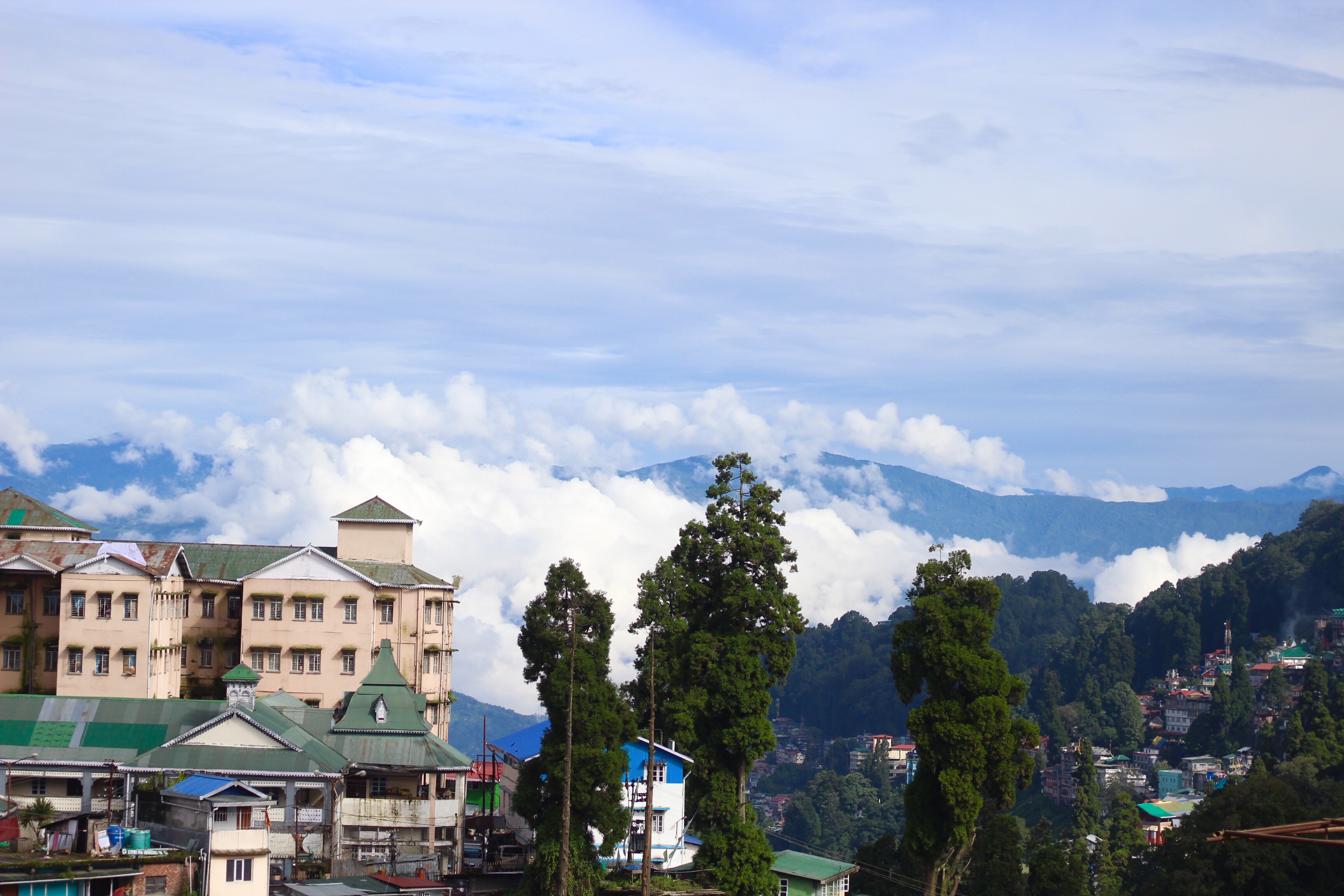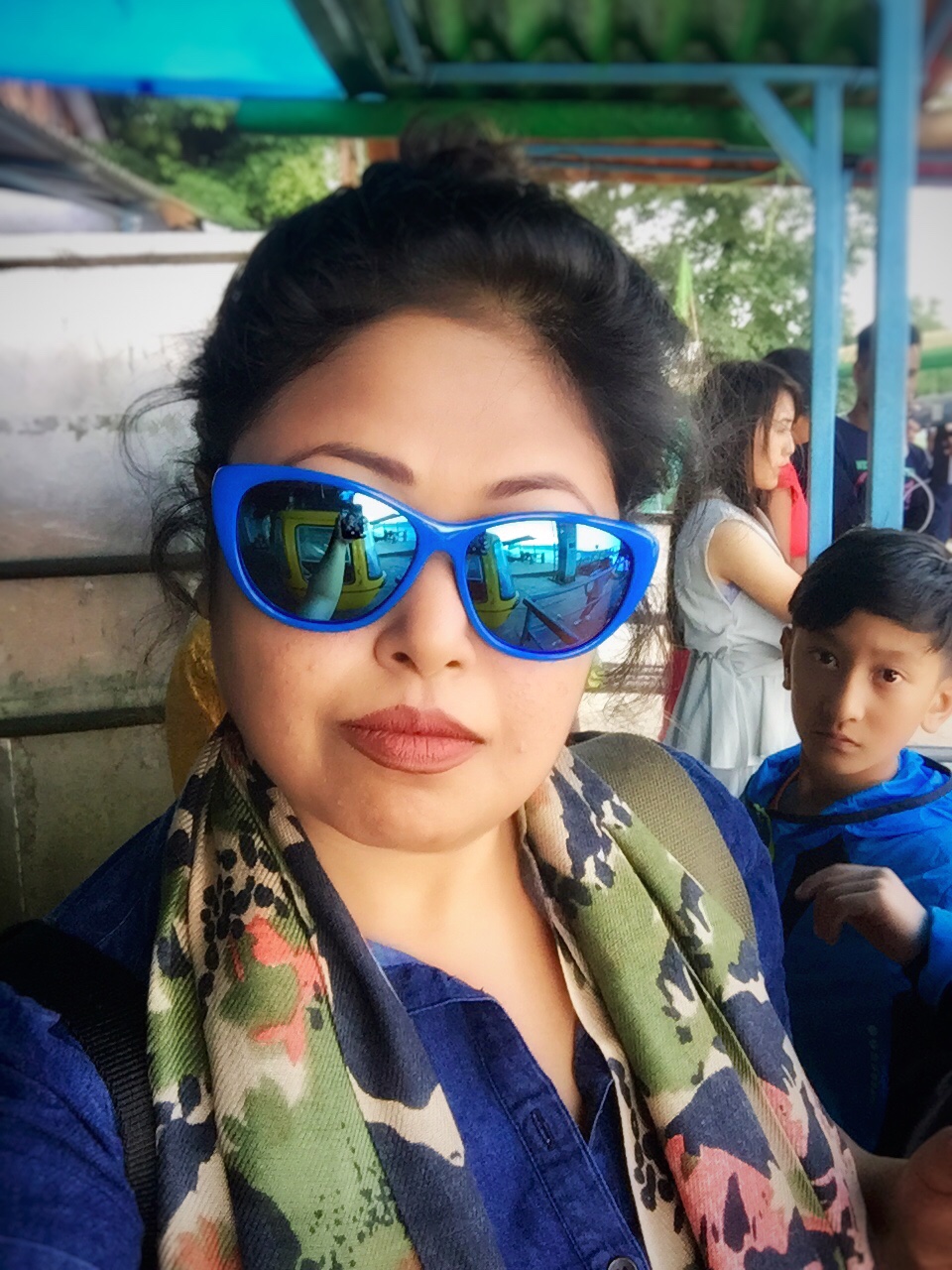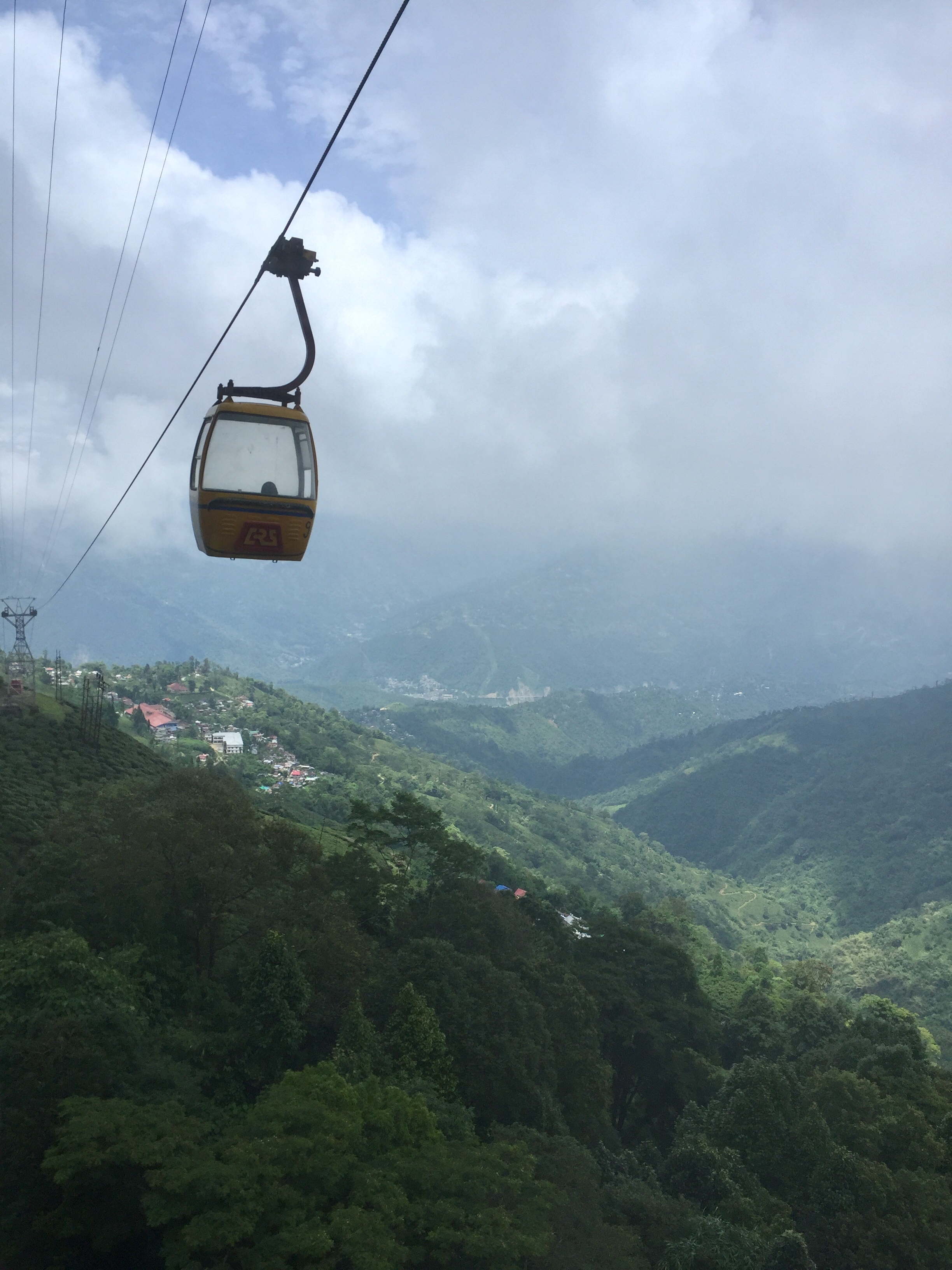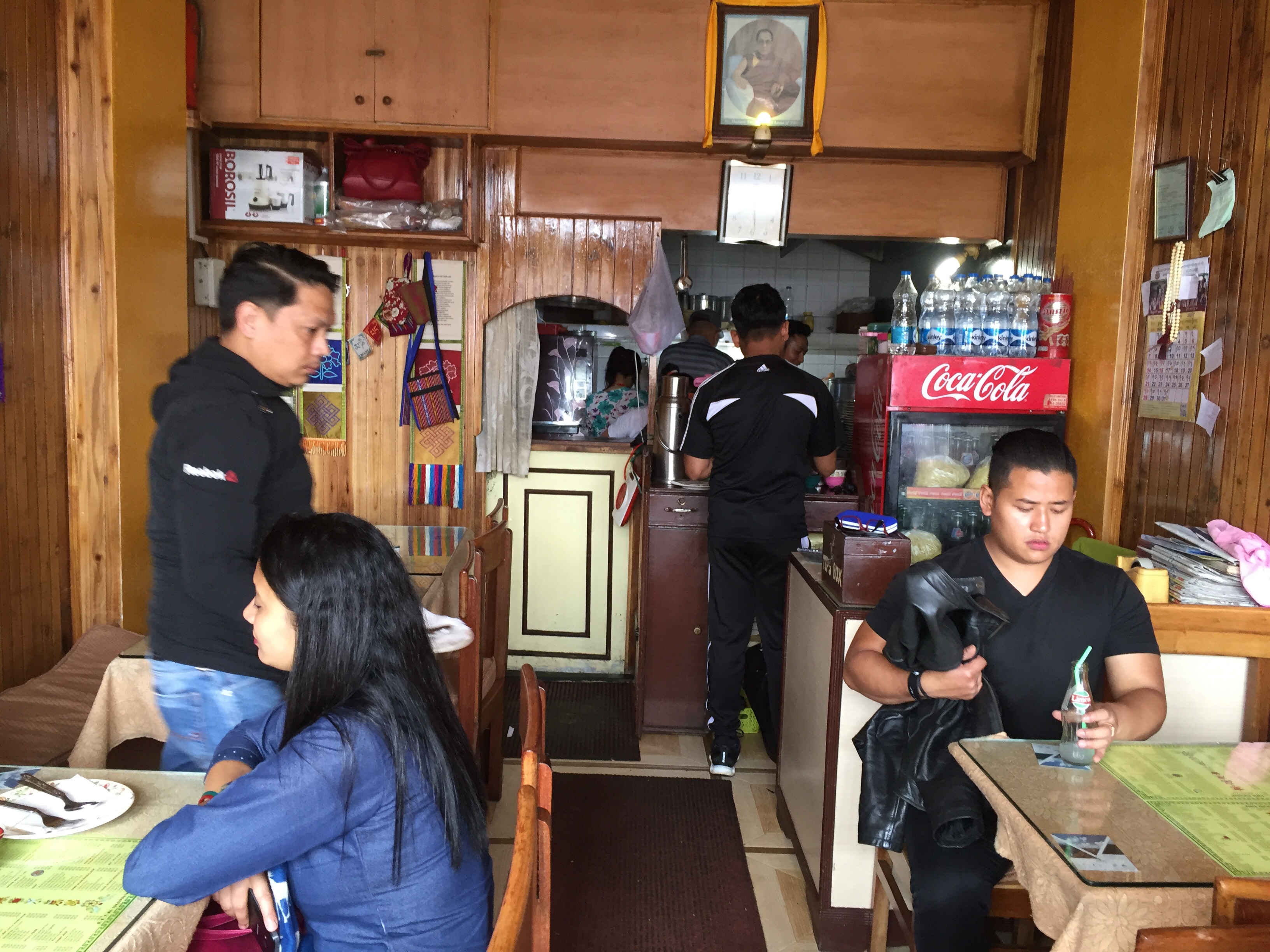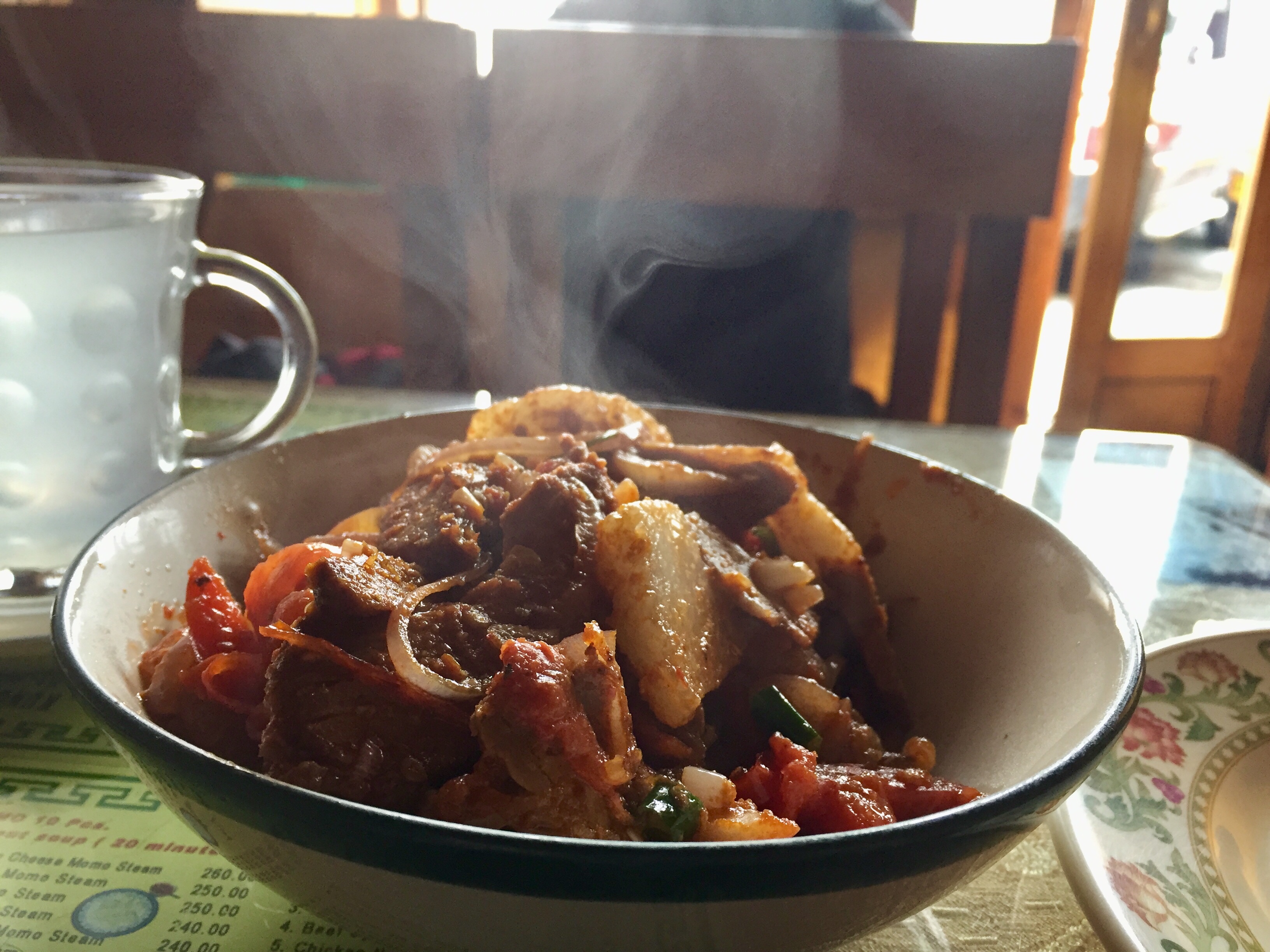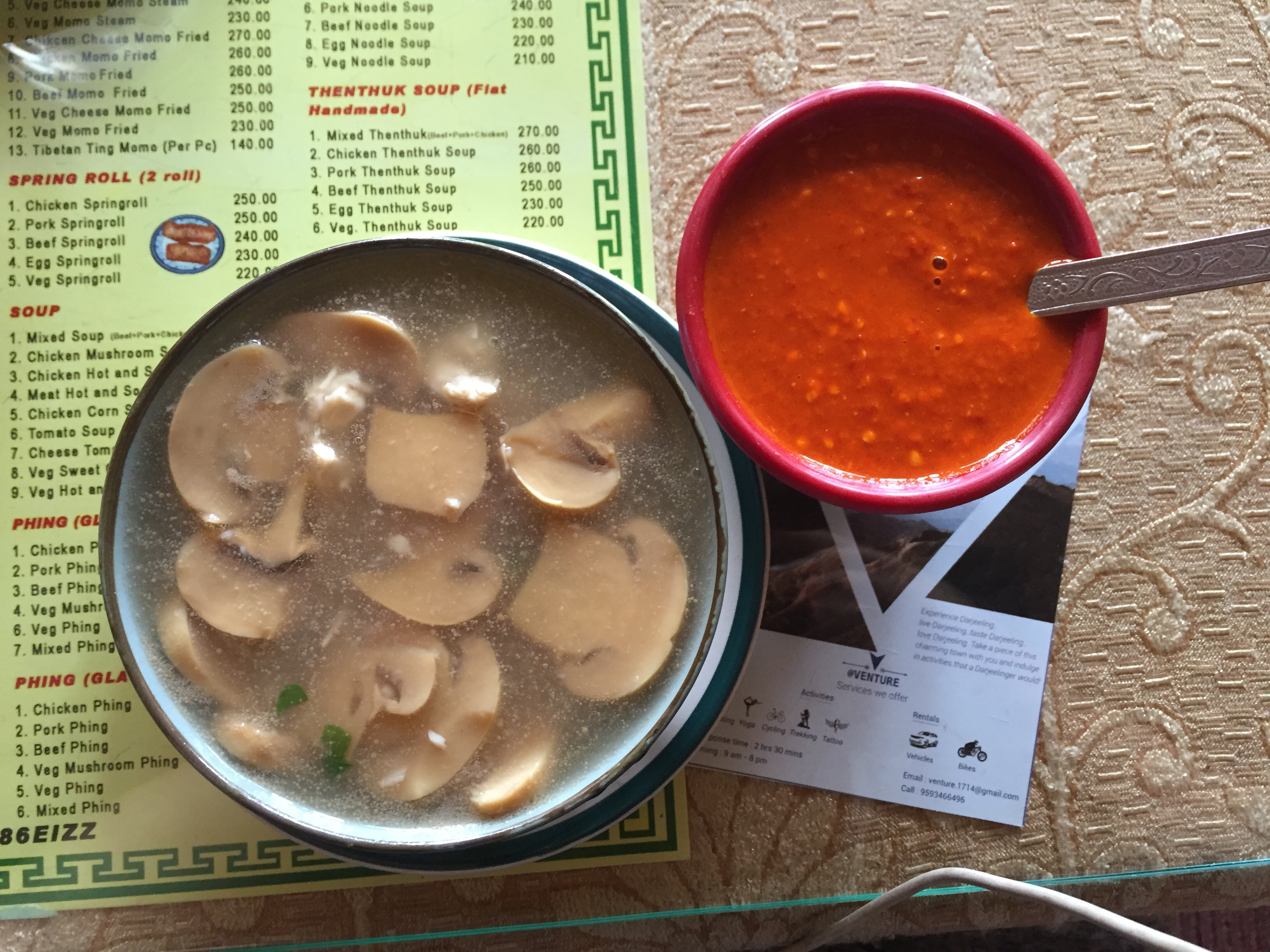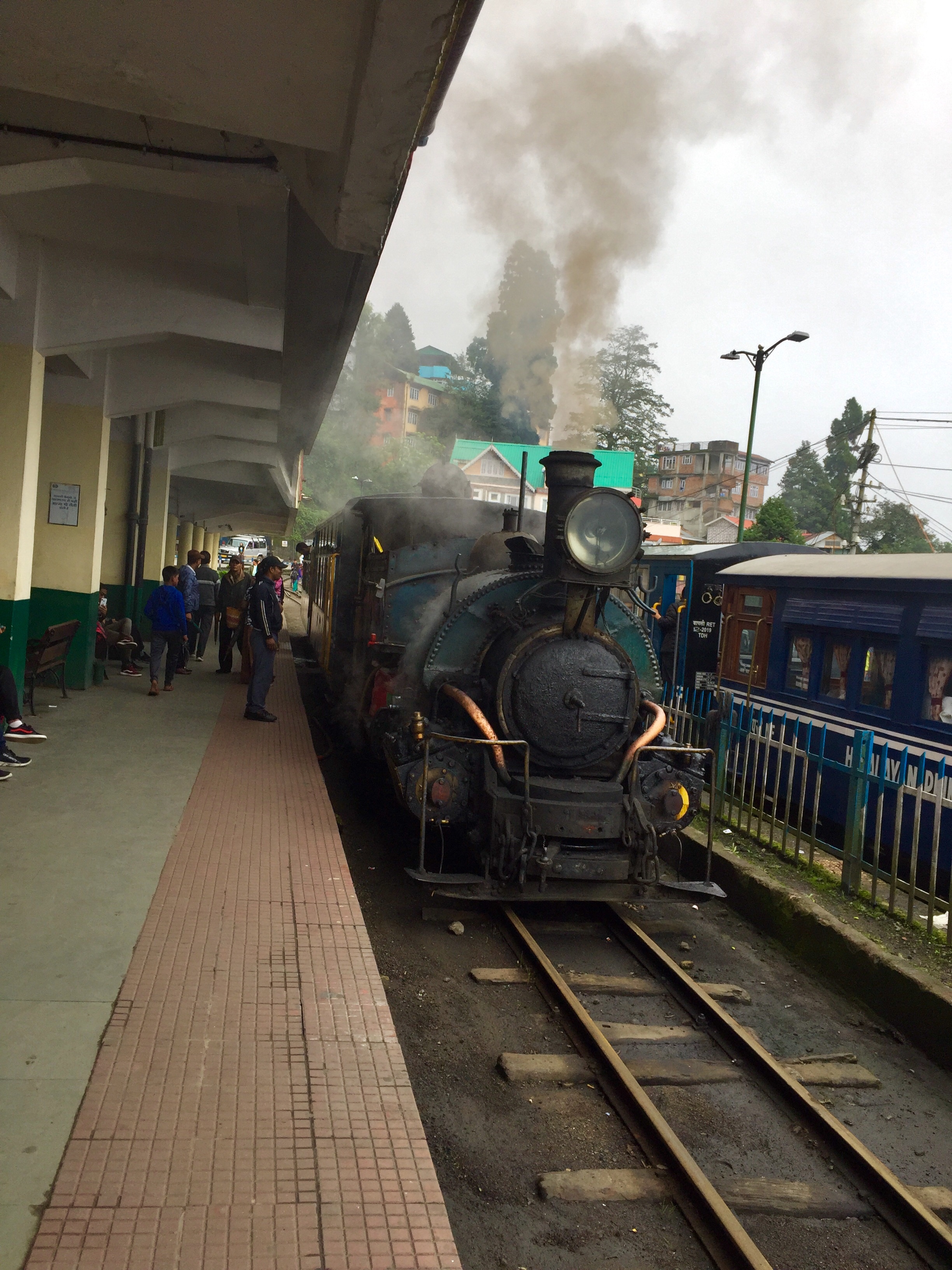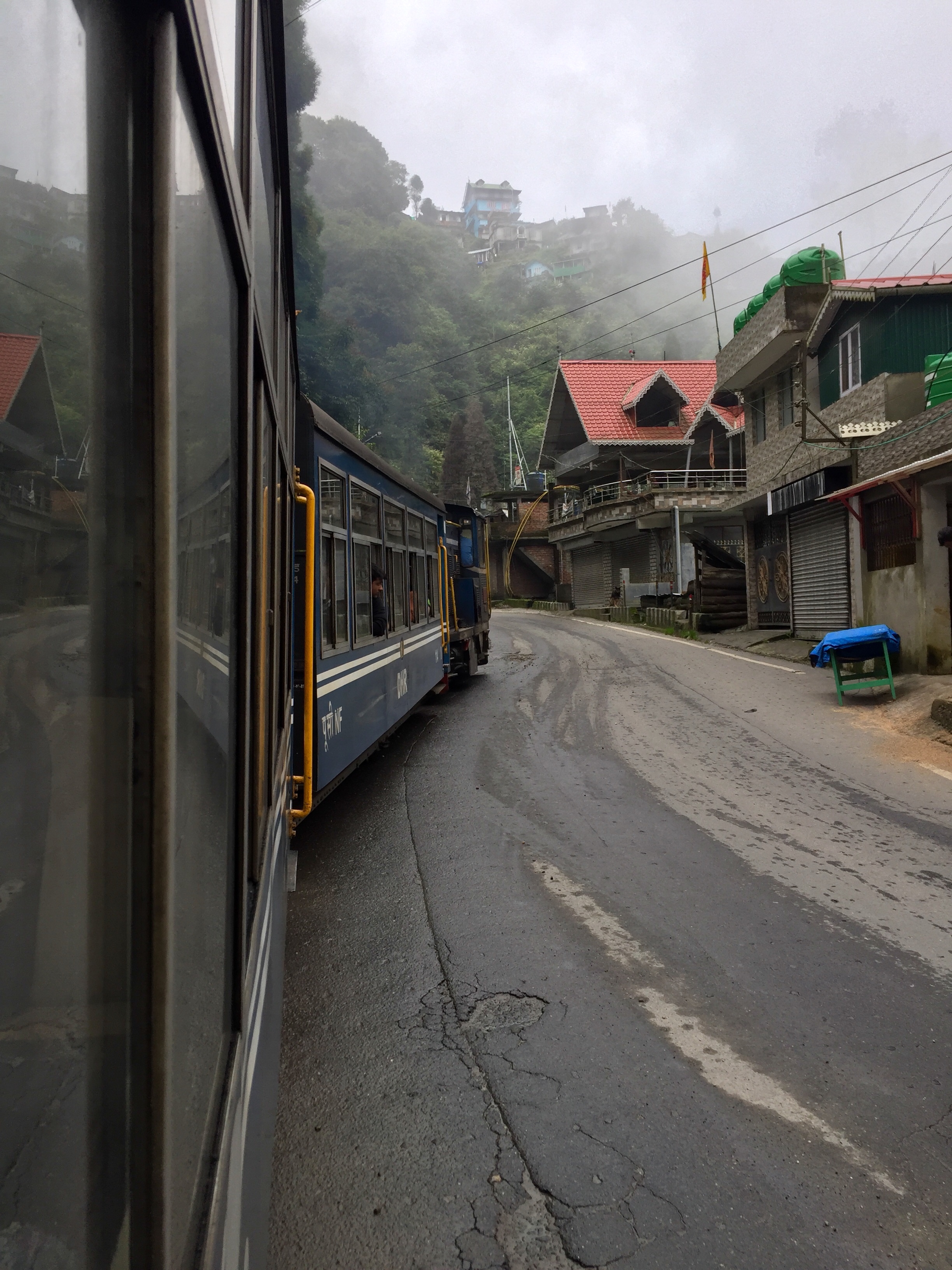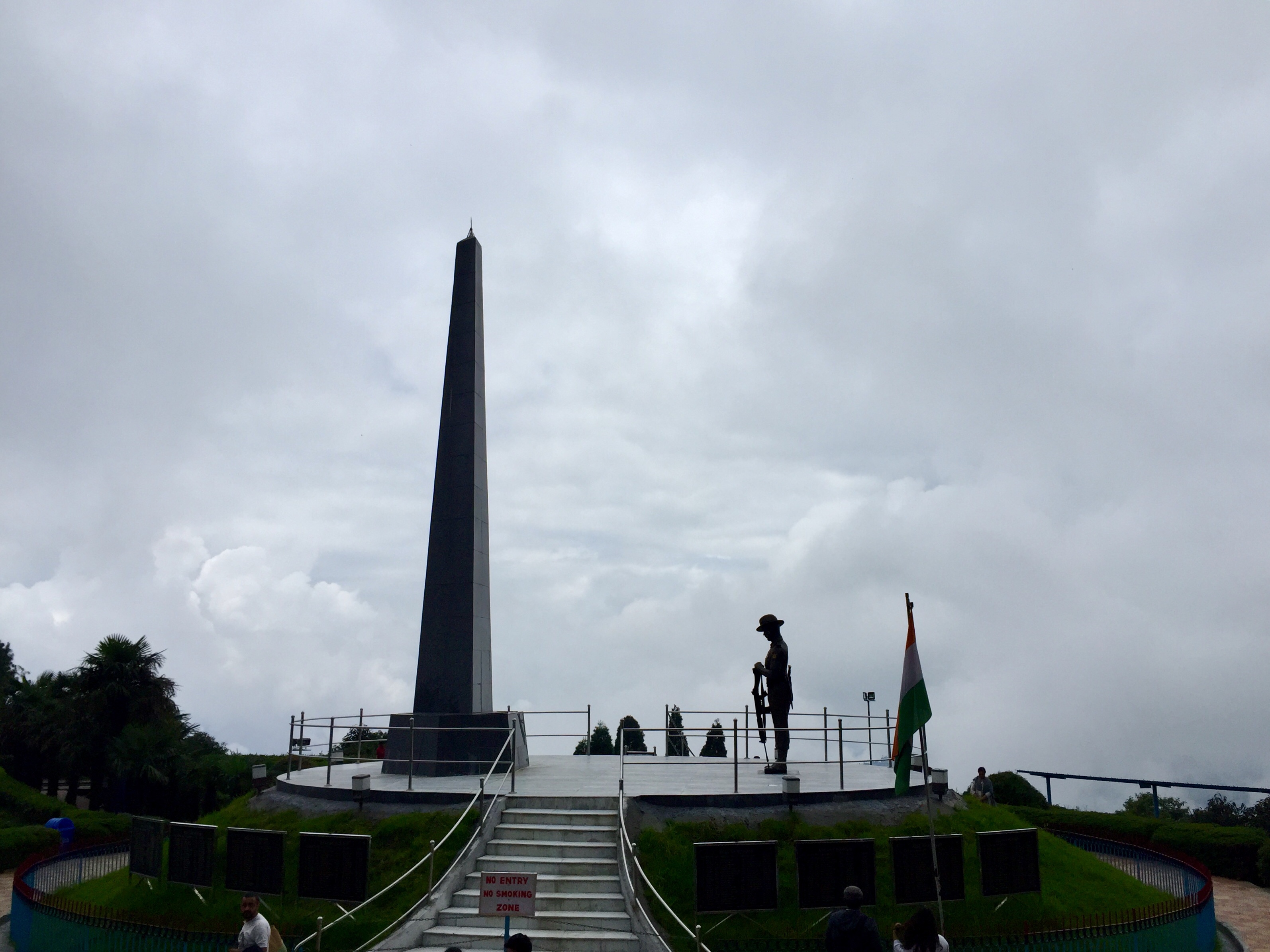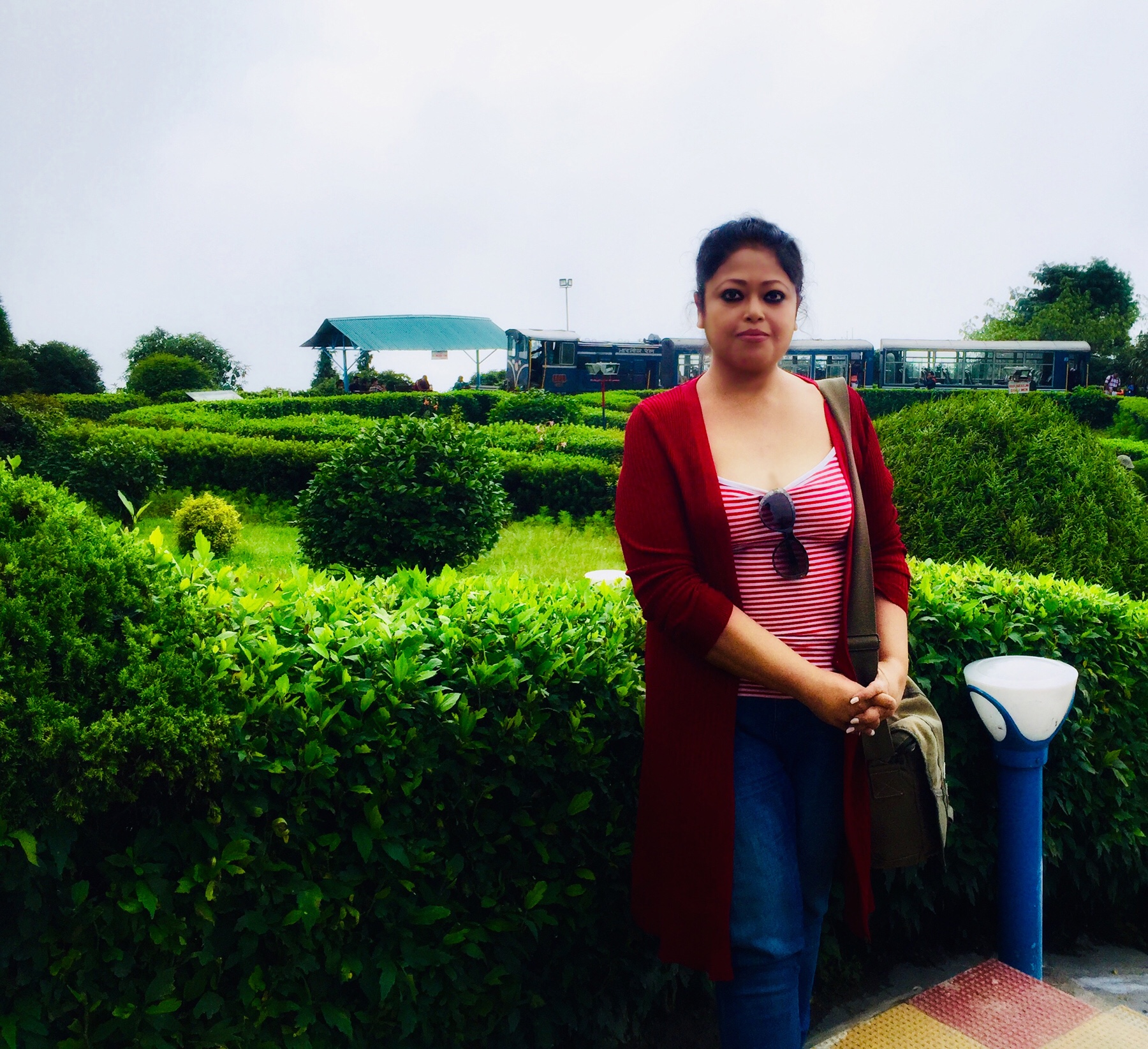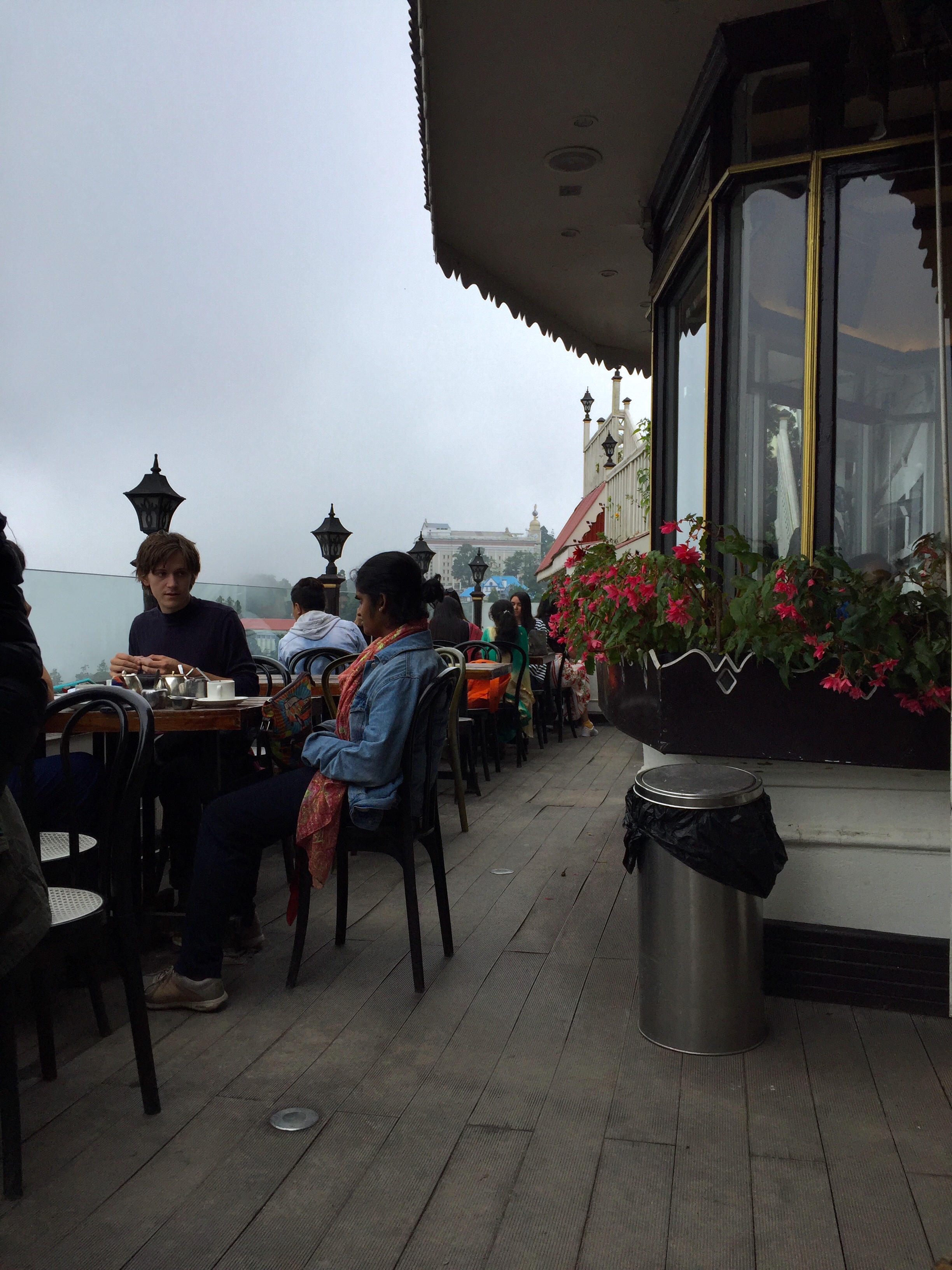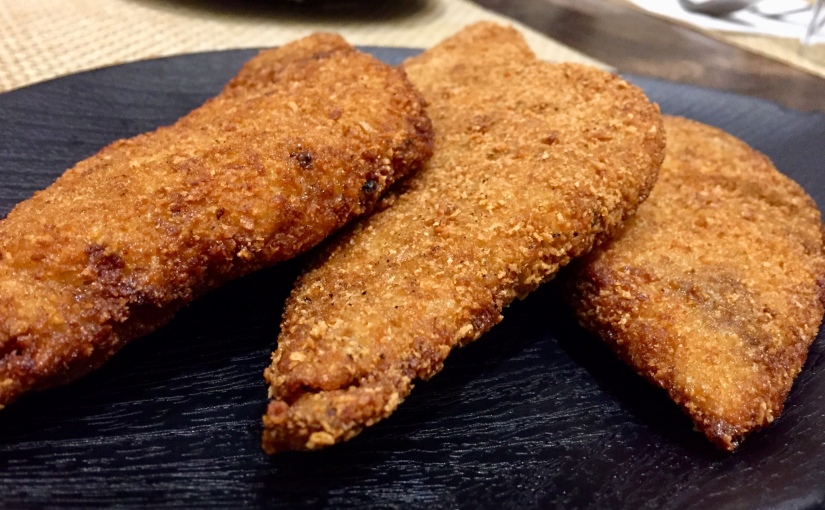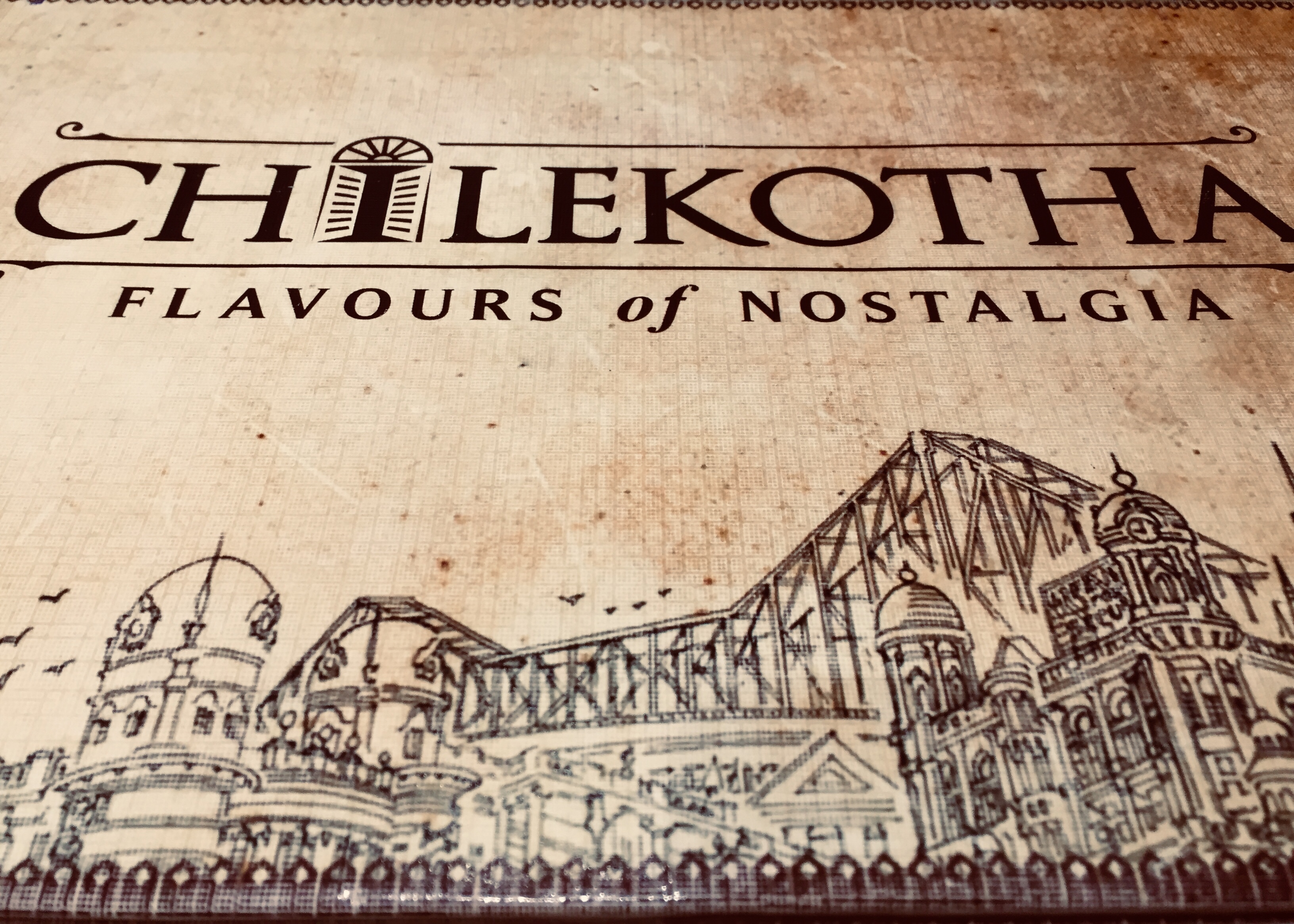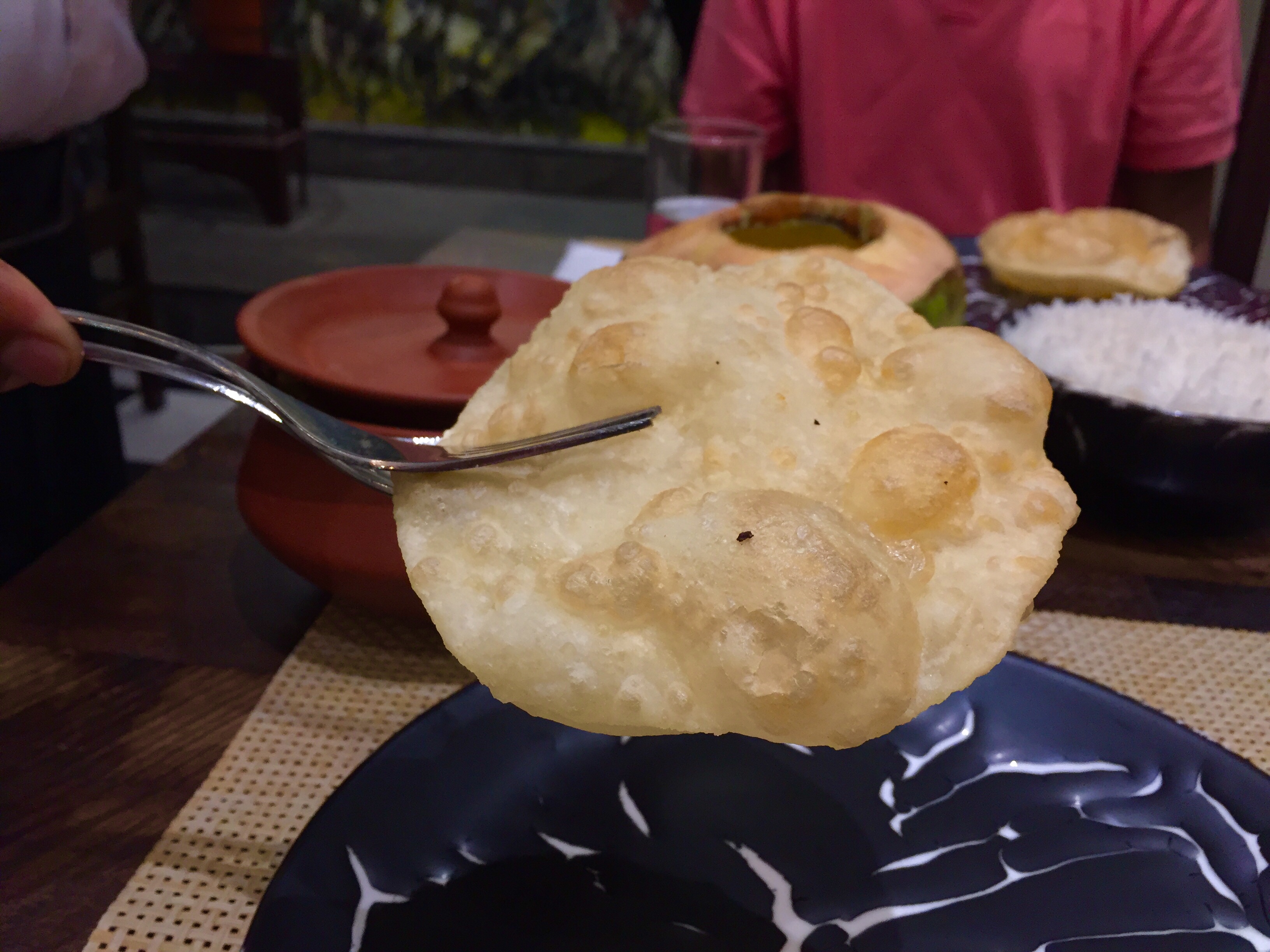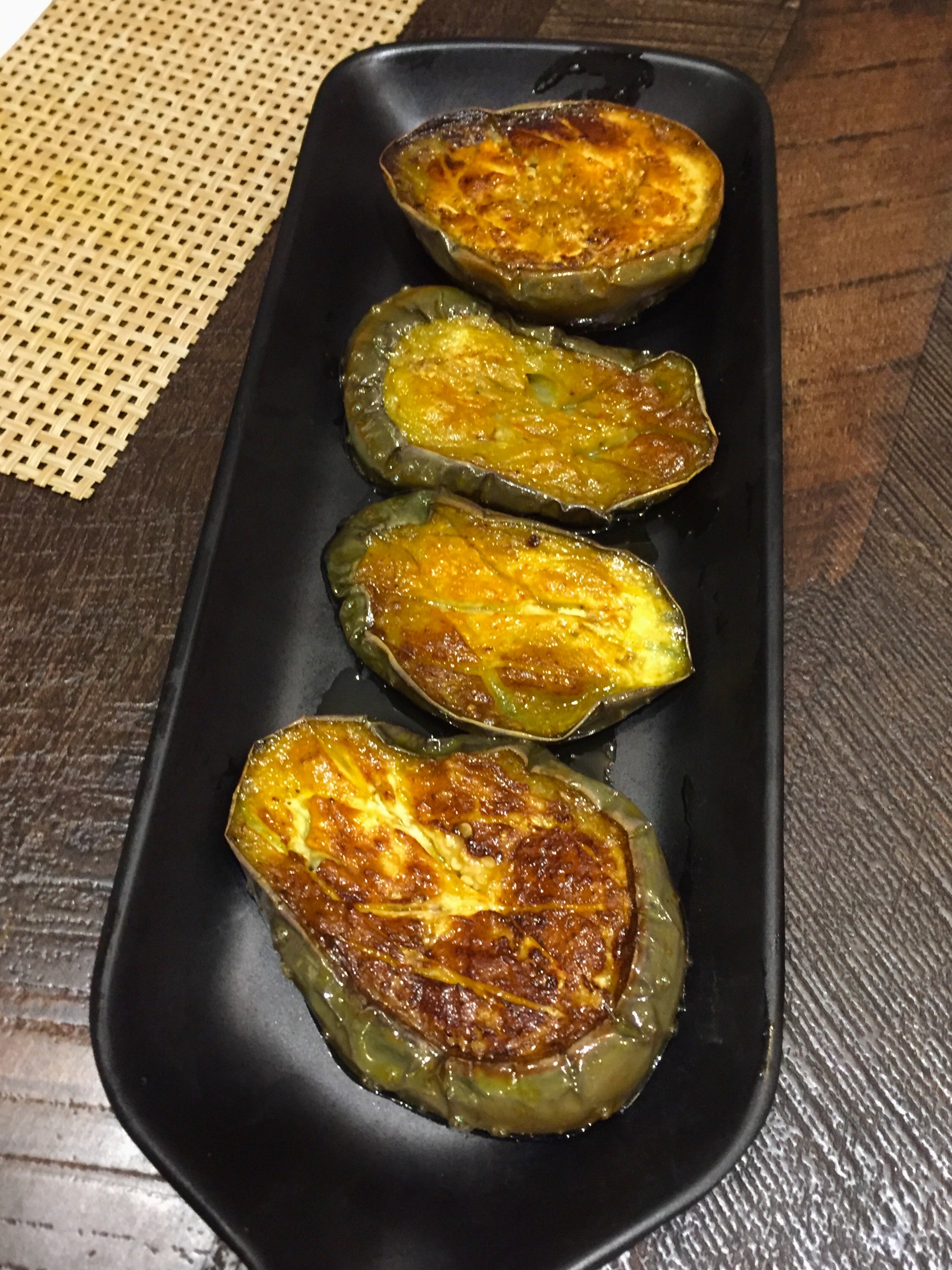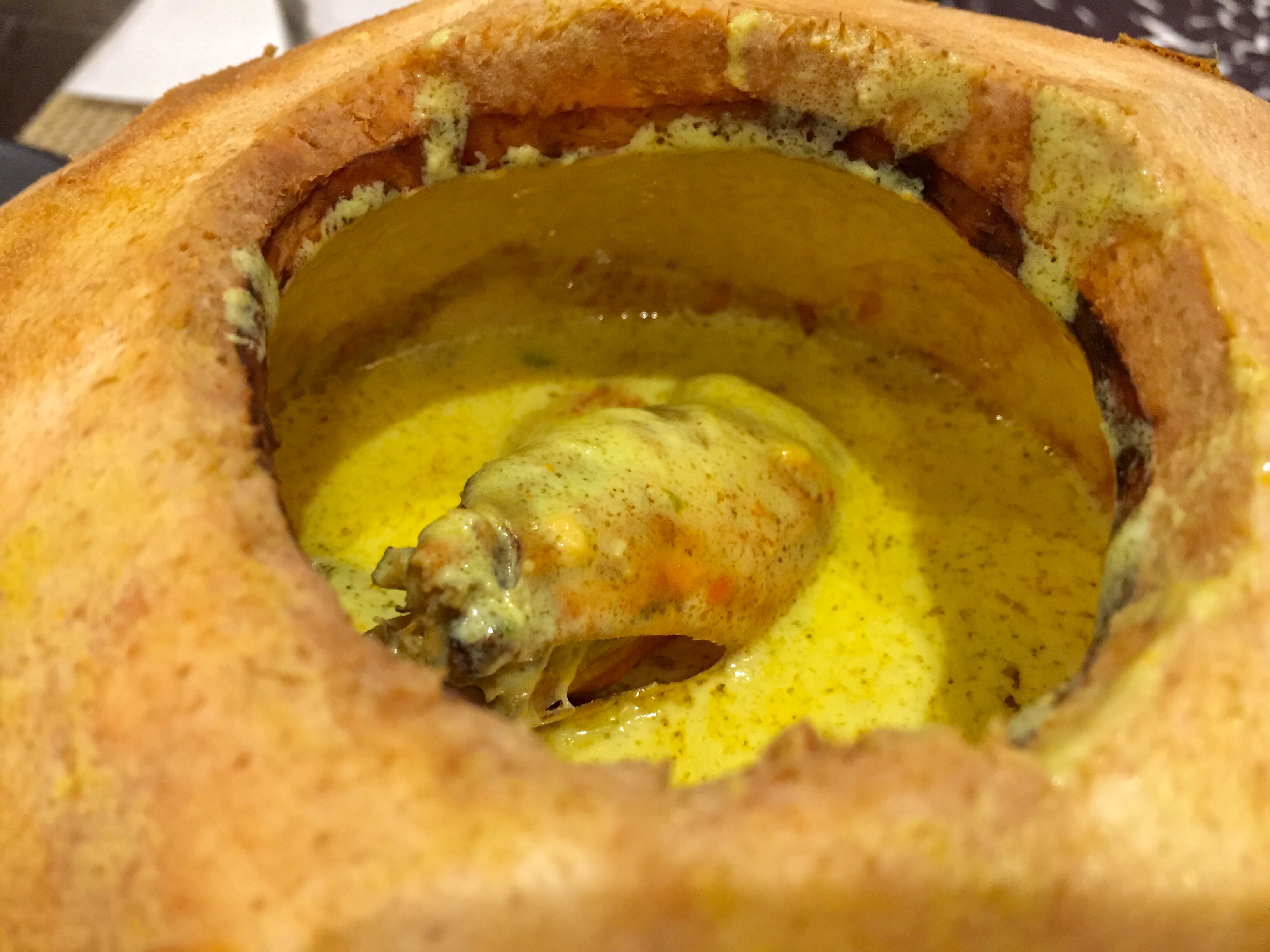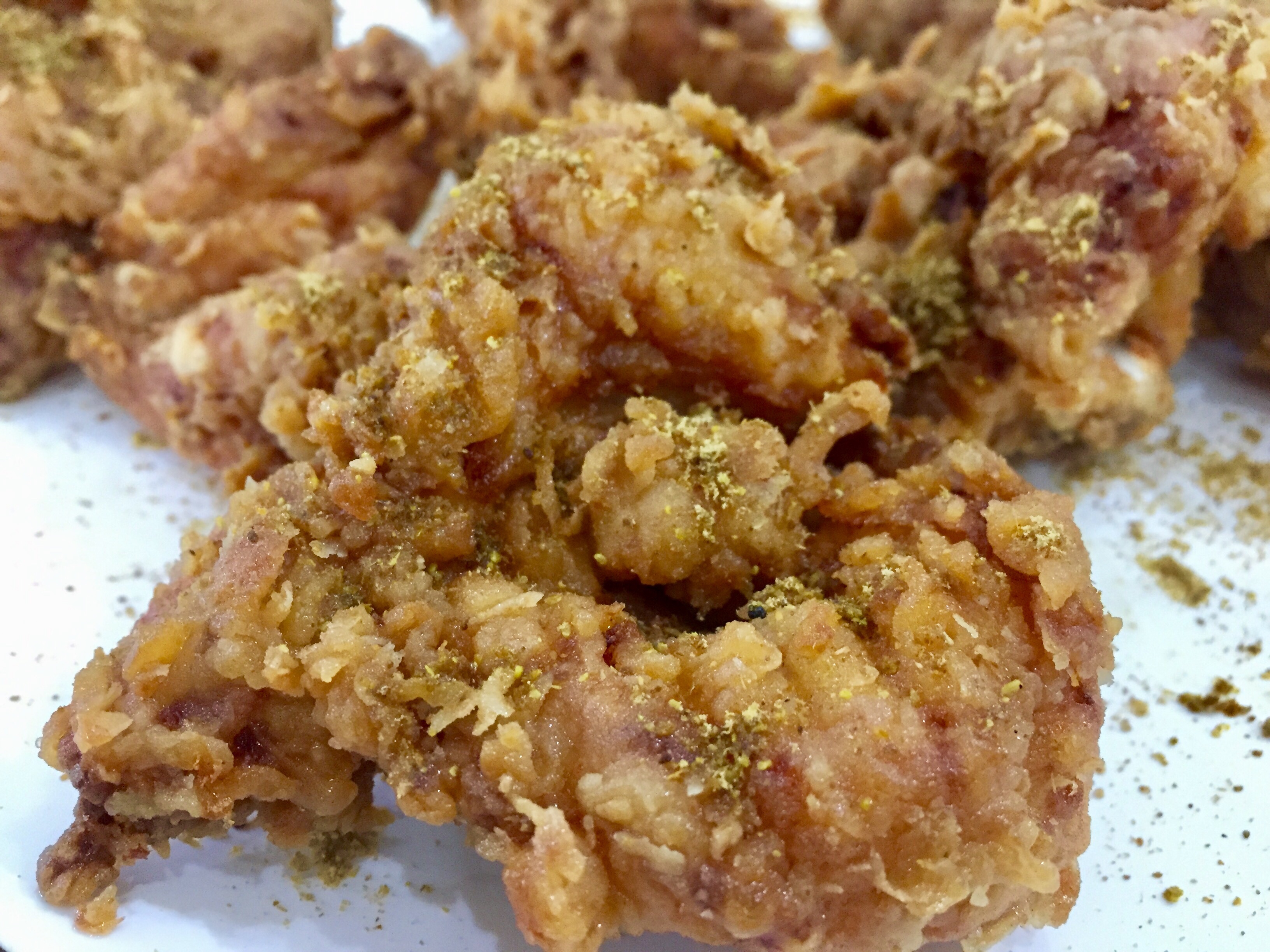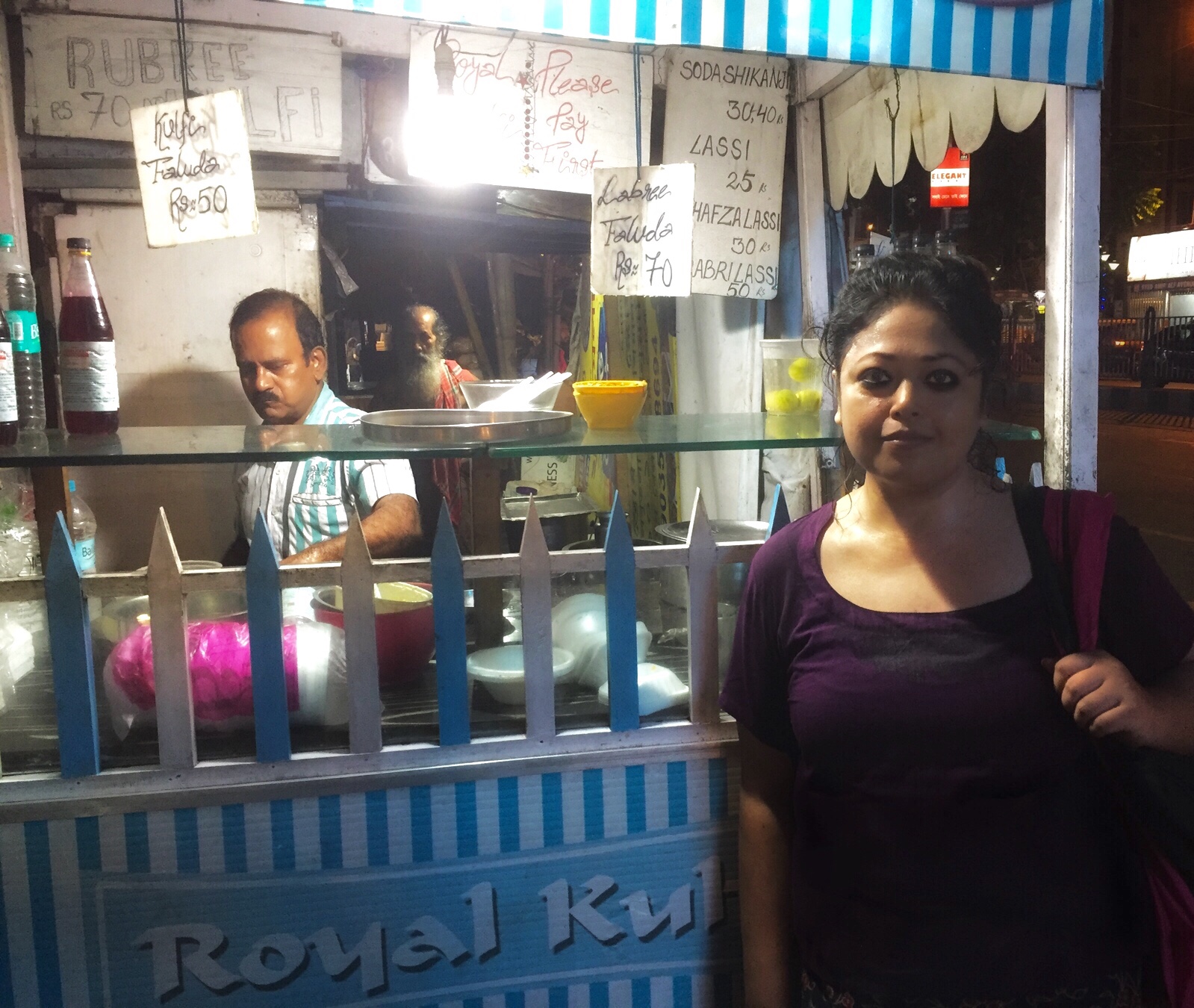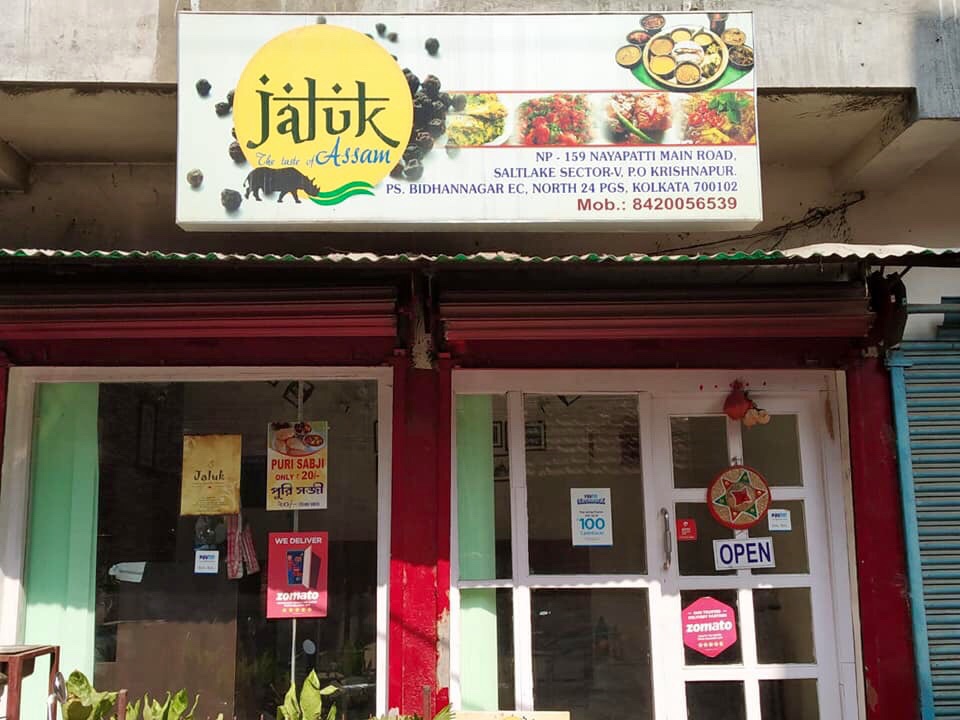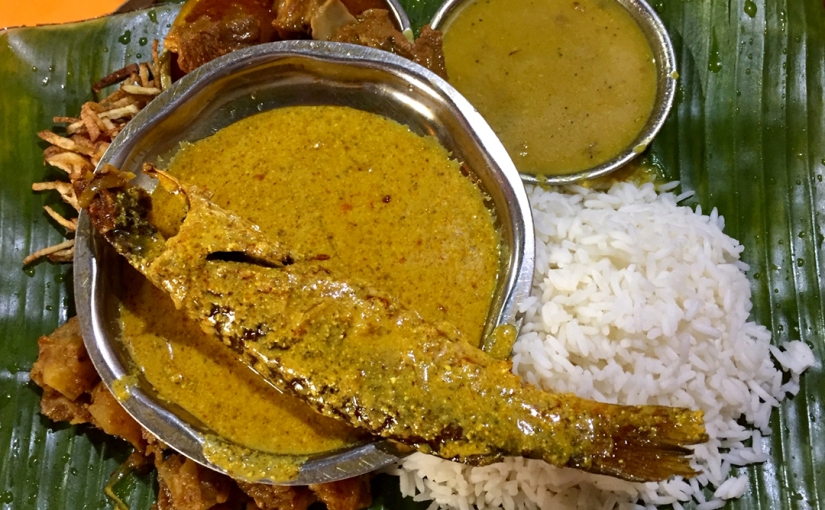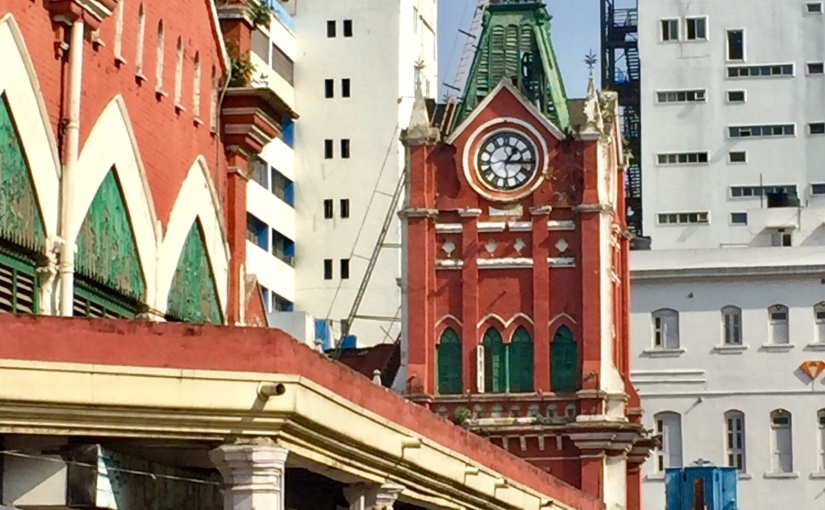A group of 15 gastro-nomads from Mumbai and Kolkata committed themselves to 2.5 days of food explorations in Lucknow. Suprio Bose aka The Nomad Foodie and Sunaeyaa Kapur of SnS Tables took up the challenge of feeding the hungry bunch and also giving them plenty of exercises in the form of Imambara hopping and chikankari shopping in between eclectic food experiences. Could the duo deliver? Read on to find the answer.
Dining with the Royalties:
On February 14, 2020, Mumbai and Kolkata folks flew in from opposite directions and the Ganga Yamuna confluence happened right at the airport before Suprio picked up the gang in a comfortable AC micro bus. After negotiating the old Lucknow traffic, we reached Levana Suites near Hazratgung, at 7ish in the evening. Post check-in we changed into Indian attires, the required dress code, to meet and dine with the Royal family of Khajurgaon. A narrow entrance (that required a bit of maneuvering for our bus to enter) opened to a fairly big courtyard with fountain and flowering plants and a good view of the grand haveli. Rajkumar Shivraj and Rajkumari Indrani, along with Ranisaheb Aabha and Sunaeyaa’s mother, Mrs. Kapur, were right there at the haveli portico to welcome us. What followed was truly Shahi Mehmaan Nawazi. At the centre of the exquisitely decorated century-old durbar hall, was waiting a Qawaali troupe that later filled the hall with energetic voices singing popular songs. Before we could take it all in, trays full of appetizers and wines started arriving to further delight us. The appetizers served were Shami Kebab, Murg Sufiyaana Tikka, Galawat Kebab on Sheermal, Chatpati Machhli, Sikandri Paneer, Pitey Palak ka Khasta, Aloo Piyaaz ki Pakori and all of them were excellent. It did not take us very long to let our guards down and start enjoying the bonhomie that blazed the environment. A few of us took the floors and proved fitness by sitting with folded legs to do the Qawaali moves. It was a good photo op too but I am sure that was not the sole intent ;P.
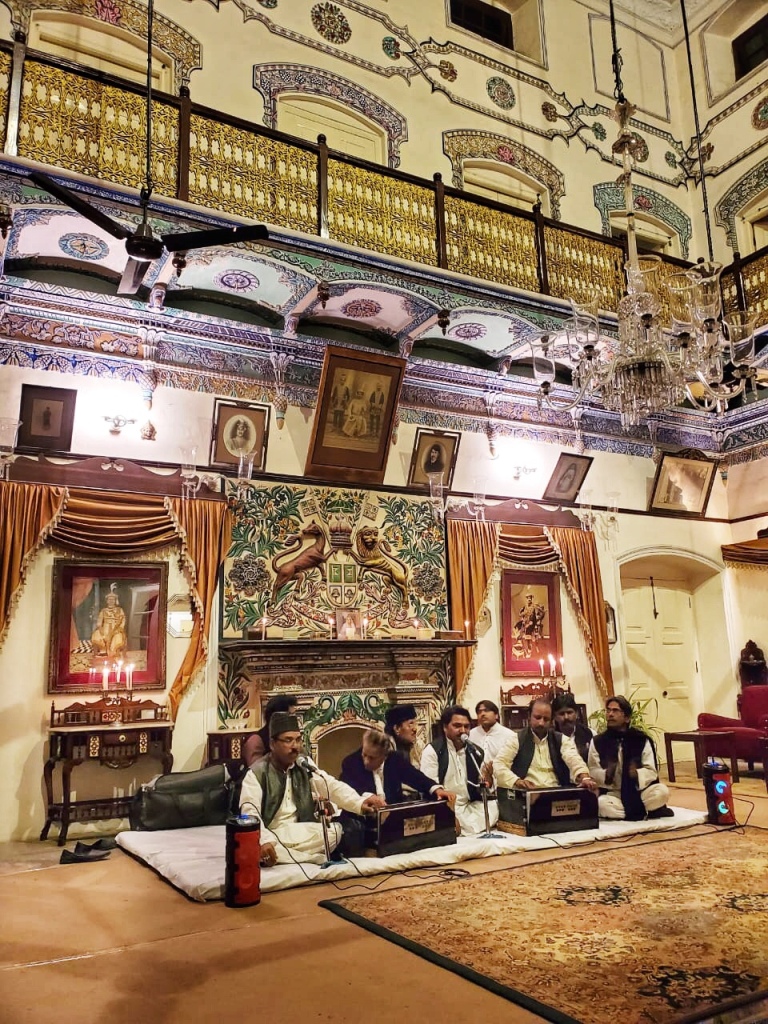
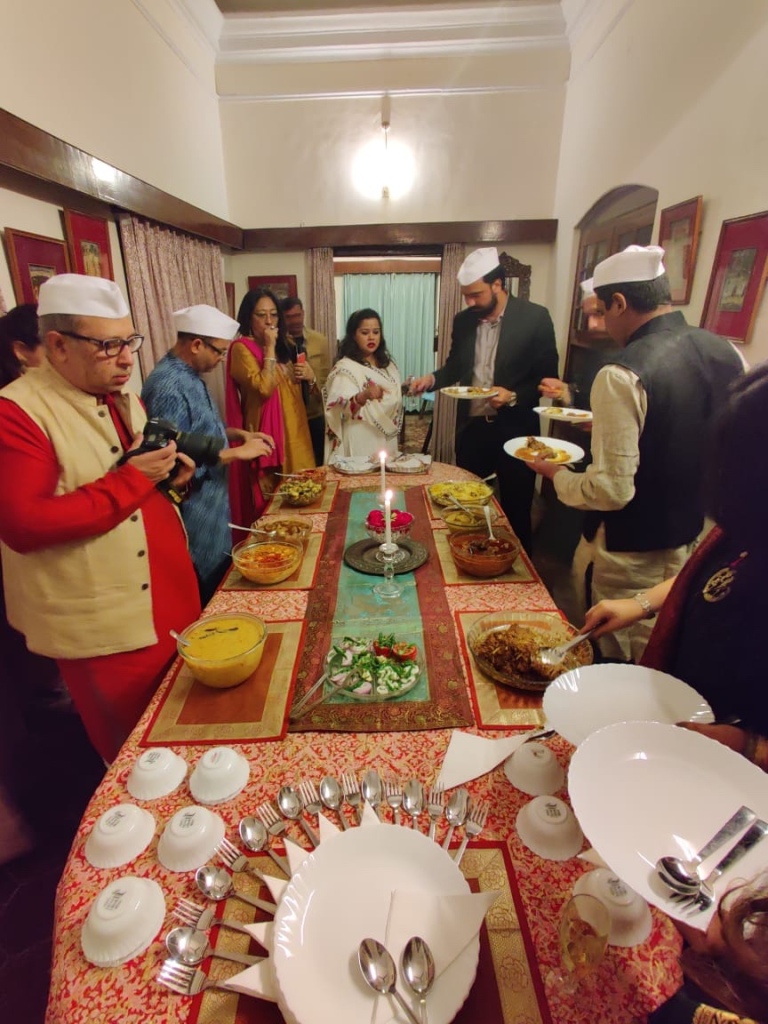
Dinner was another elaborate affair with a grand table laid out with goat meat Korma, Murg Musallam, Shahi Pulao with goat meat, Machhli ka Saalan, Paneer Begum Pasand, Awadhi Nimona, Besan ki Aloo, Rang Birangi, Dal Sultaani, Subz Pulao, Sheermal, Rumaali and Phirni, and Malai Paan as desserts. Murg Musallam deserves a special mention as the melting meat with flavourful spices was one of the best meat dishes I have had in my life. Rajkumar Shivraj explained that the recipes were closely guarded culinary secrets in the royal kitchens. The khansamas who cooked them got the recipes as heirlooms from their ancestors who were also a part of the service staff for the Maharajas of Khajurgaon.
Well, the royal treatment did not stop there. Dinner on Day II was an equally enthralling experience and this time we were invited to Avanbai Mansion by Sunaeyaa’s family. Not many are aware that Lucknow has a third secret river Saraswati aka the Parsee Community flowing underneath the Ganga-Yamuna Culture, that is the Hindu and Muslim Communities that co-exist famously in this city. Sunaeyaa’s aunt Ms. Zarine Viccaji explained that her ancestor was awarded a taluk in Lucknow by the British and he eventually had invited his doctor and friends to move in too giving Lucknow a rich Parsee legacy over the years. If Khajurgaon was about elegant Awadhi cuisine and upbeat yet soulful Qawaali, Avanbai showed how to party Parsee style in Lucknow. The lovely terrace was lit up as a bokeh background and live ghazals and barbecue with an open bar had set the mood for the evening. We soon discovered quite a few singing talents and more than that, dancing talents amongst us that made for some absolutely fun facebook lives. We were also offered a tasting of famous Raja Bhaiya’s bhang with ample warnings to consume only if we could handle the intoxicating herbs. The after-effects are heavily censored in this blog and will remain as private jokes for our next foodie trip.

The food at Avanbai Mansion was an extravagant event. The Appetizers were Tandoori Soya Chaap, Malai Broccoli, Mutton Seekh Kebabs, Murg Makhmali Tikka, and Kakori Kebab. While Kakori stole my heart Malai Broccoli was a first for me and I bow my head to this innovation that tasted delicious.
For the main course, we had Mutton Pasanda Kebab, Fish Mussallam, Paneer Khush Rang, Veg Pulao, Mint Raita, Kulcha, and of course the Parsee touches in forms of dhansak and brown rice. Dessert was superlative Gajar ka Halwa that was drenched in I was sure home churned ghee to make the dish that delectable. My sweet tooth wanted more and more of it while my bhang overdosed fuzzy head wouldn’t let me have any. Such dilemmas are serious matters in the foodie world. I, of course, listened to my tooth and had a second helping.
Lucknow architecture and Lucknowi Tehzeeb:
So that the group was not declared as excess baggage by Indigo and GoAir, Suprio and Sunaeyaa had put plenty of calories burning cardio in the itinerary. We went around the city to visit Bara Imambara, Bhul Bhulaiya, Baoli, Rumi Darwaza, Clock Tower and Chhota Imambara. We had an excellent guide with us who matched our sense of humour and helped us have a great experience. We learned a lot about the amazing architectural skilfulness of the builders of that era, laughed a lot while navigating the seriously fitness challenging steps and labyrinths of Bhul Bhulaiya and Shahi Baoli and of course clicked hundreds of pictures.

We were also acquainted with the history of aristocratic Lucknowi Tehzeeb that even the common people of the city displayed and how Aadab was introduced as a neutral greeting for every religion and culture that was a part of Lucknow. The city still retains the culture of being warm and polite and using phrases such as ‘Muskuraiye, aap Lucknow mein hain’ (Smile, you are in Lucknow) and ‘Yaar nehin tu bhai hai mera’ (You are not a friend, but like a brother to me).

Gunjing and Chowking for Lucknow Street Food
The one phrase that caught our imagination was ‘Gunjing in Hazratgunj’. Say again? Yes, you have read that right. Hazratgunj in Lucknow is equivalent to Cannaught Place in Delhi. And hanging around in Hazratgunj is known as ‘Gunjing’! So very cool! Though our short trip did not provide much scope for gunjing we did stop at neighbourhood Lalbagh on our final day for breakfast.
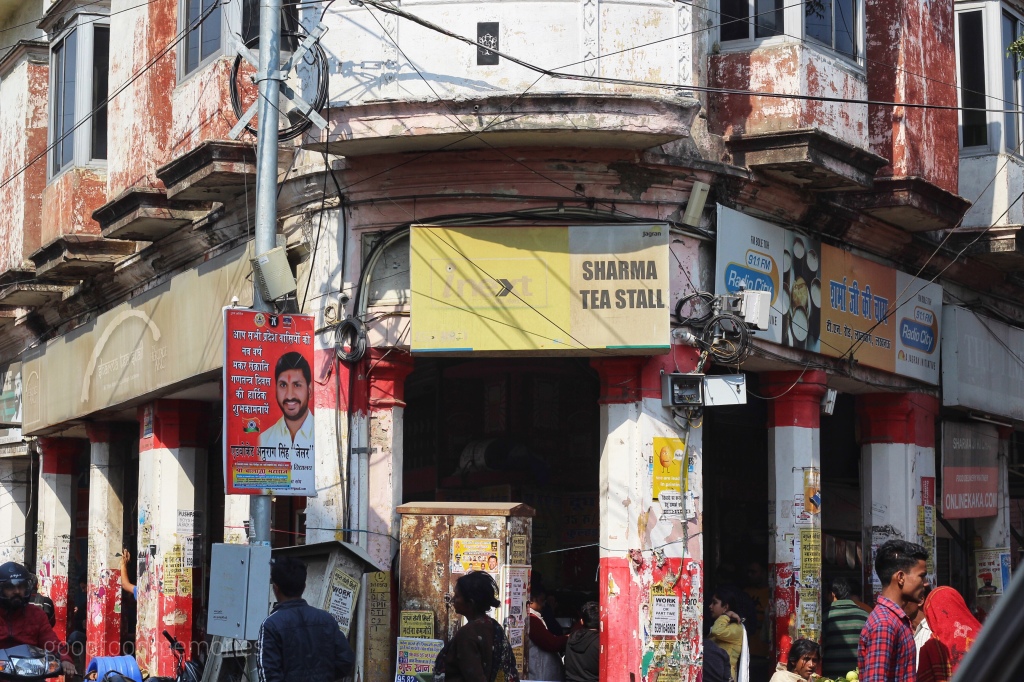
Sharmaji ki Chai is a 50 plus year old tea shop in Lalbagh that is known for its bun makkhan, samosa and of course tea. The shop was a humble hole in the wall one. The buzzing crowd occupies the unstable tables on the pavement to eat and sip. Our group attacking the shop with cameras provided much amusement to the regular customers. A (cute) man even wondered loudly why everyone was clicking kulhads suddenly to which I had to explain that we were tourists. He was from Chennai and after learning that I was from Kolkata he sweetly smiled and pointed out that Bengal had BhaaNr which was equally unique. Samosa at Sharmaji looked more like a smooth tennis ball, but that did not hurt its fillings and the spicy half-mashed potatoes inside tasted like as they should – delicious! But what I liked the best was Bun Makhan. Soft semi-sweet pillowy bun cut horizontally to spread a generous quantity of creamy white butter in between. The right way of having bun makkhan is dipping it into the tea and then taking a bite. The tea is milk heavy, thick and sweet. The milk and the strong tea liquor are poured separately into the mud cups yet the two liquids get blended well without anyone stirring the cups. Quite a memorable breakfast!

Breakfast on Day II at Netram was also remarkable. (Apologies if I am not following day-wise sequences, I am more focused on the flow of the write-up. I have put the itinerary at the end so that one can put the puzzle together.) The piping hot daal puris and the crispy baby jalebis were dangerously addictive.

Before I go back to street food, here is a quick mention of the superlative lunch at Nawabeen on Day II. Barra kebabs, Biryani, Murg Korma, Murg Stew and Shahi Tukda disappeared within a few minutes of their arrival on the table. Ravishankar and Doma took pictures of empty biryani bowls as souvenirs because the restaurant wouldn’t allow them to take the bowls home.
Okay finally, I am ready to talk about the real Nawab and Begam of present-day Lucknow’s opulent culinary dynasty– Tunday and Idrees. Regarding Tunday, a bit of history would not hurt anyone. We know Galawat (commonly known as galauti) kebabs were invented to satiate the kebab cravings of toothless Nawab Asa-ud-Daula around the 17th century. However, it is said that in the later period, Haji Murad Ali had perfected the art of melt-in-the-mouth-Galawat and had won the royal patronage of Nawab of Awadh Wajid Ali Shah. Legend says Haji Murad fell from the roof of his house while preparing galawat and lost one arm. He was nicknamed Tunday after his physical deformity and down the years the name gave his Tunday kebabs an iconic status. His bloodlines run two shops now in Lucknow and the recipe remains a family secret. To this day the spices are prepared and mixed at the homes of the Tunday family and sent to the shops.
We were taken to the Aminabad/ Nazirabad/ Chowk outlet of Tunday Kebabs as that served both goat meat and buffalo meat galawat kebabs. We tried both the varieties and I personally liked the buff ones more. Of course, buffalo meat has the advantage of containing more fat making the meat more tender and absorbent and it could soak up the flavours of the spices and the aroma of charcoal smoke. I had once watched a BBC video of how galawat was prepared in Lucknow and the process was quite fascinating. Marinading the meat is a long process and after pounding the meat to a smooth paste and mixing it with spices, live charcoals are placed at the centre of the meat bowl and covered to smoke the meat. Like most of the Lucknow street food places, Tunday too had an open kitchen at the front part and a seating area at the back. The meaty delights were served with thin and big ulte tawa ki paratha (paratha roasted on an upturned round-bottomed pot). So did Tunday match up to its reputation? Yes, yes and yes! There were pin-drop silence at two tables as the otherwise chirpy and loud group got dirty with their fingers scooping the ultra-soft and succulent ghee bathed kebabs with paratha bites. The foodgasm hashtag should be reserved only for Tunday kebabs.
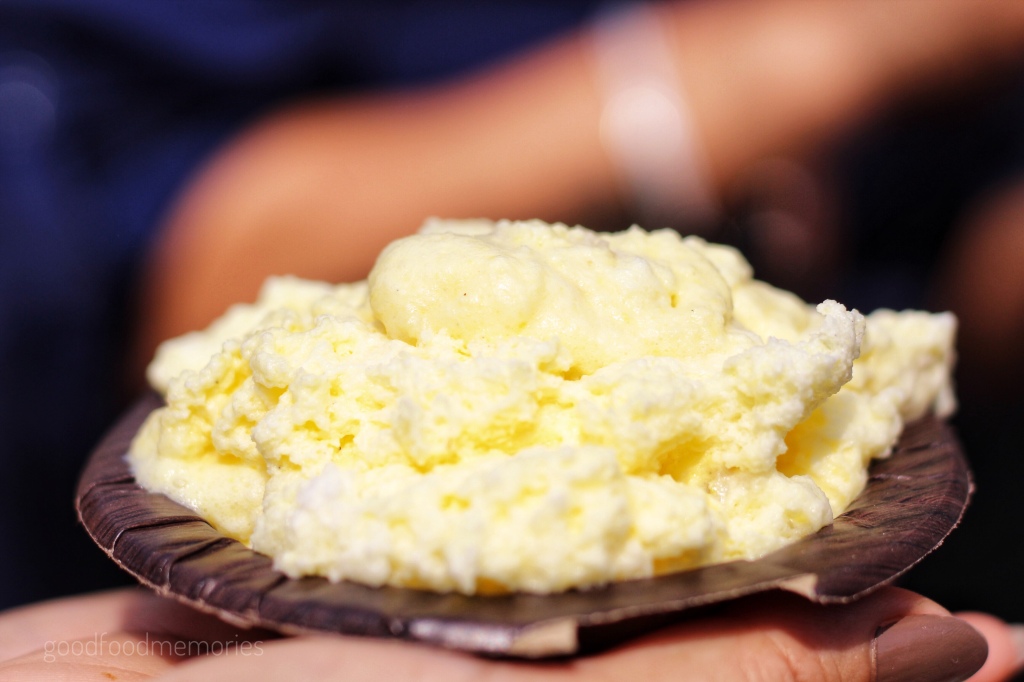
Before we boarded the bus again to continue with the food trail, Suprio brought with him a Nimish vendor and Doma treated us to this luscious creamy dessert, typical of Awadhi cuisine of Uttar Pradesh. Known also as Makkhan Malai, this frothy, airy and delicately sweet delight is an outcome of a laborious process of whipping thick milk cream and mixing it with saffron, rosewater, cardamom and topped with pistachio slivers or paste. Nimish vendors can be found on the streets of Chowk in large numbers. By the way, this intensely flavoured dessert is known as Daulat ki Chaat in Old Delhi and as Malaio in Varanasi.

Situated in one of Lucknow’s most historic areas, Chowk, Idrees Biryani is a small and partially-hidden eatery that is marked as one of the most popular Awadhi dum biryani outlets in Lucknow. The restaurant was founded by an expert biryani maker, Mohammad Idris, back in 1968, and is now managed by his sons Abu Bakr and Abu Hamza. The secret of Idris’s exquisite mutton biryani is the use of milk, herbs and saffron in the recipe which is cooked in dum style in a copper degh on ‘paththar ka koyla’ or stones. The goat meat biryani was a burst of Awadhi flavours but the disappointment was the rice, which was on the drier side and one needs to add salan or a liquid containing spices and meat juices to make it more palatable. The meat, on the other hand, was of superior quality.
Some Chikankari shopping was scheduled in between to give our tummies some time to make more space. Sunaeyaa, who is an ex-fashion designer took us to a shop with a wide collection of exquisite chikankari sarees, dupattas, kurta and dress materials. I picked up two lovely sarees (one for mom) and a sheer white dupatta with elegant chikan motifs. Doma reduced the shop’s stock by half and ended up paying extra for 33 kilos of excess baggage. Well, in her defense she picked up kebabs too to feed entire Kolkata’s population.

Our last stop was at Raheem’s Nihari on a narrow and crowded lane near Chowk. If Hazratgunj reminds us of Cannaught Place, Chowk is equivalent to Jama Musjid area of old Delhi. Started in 1890 by Haji Abdur Raheem Saheb, Raheem’s hotel is well known for its Nihari-Kulcha. For the uninitiated, nihari is a robust runny curry, infused with juices from beef or mutton shanks by cooking overnight with meat on bones, spices & special herbs on a low fire. Nihari is best served with a warm, fluffy ghilaaf kulcha (the upper layer is ghilaaf and the bottom layer is khameer). Awadhi Nihari is ligher and flavourful unlike what we eat in Sufia in Kolkata which is thicker and has different spices. Both beef and mutton were available and again I found the beef Nihari more appealing. The place remains packed all the time and you have to have a hawk’s eye to spot who’s nearly done with his or her plate and place yourself strategically behind them so that you can grab the chair the moment it is vacated. Or if you are desperate like Niloy, you can tap a stranger on the shoulder, and tell him, ‘Ho gaya aap ka?’ (Are you done?)You have the Lucknowi tehzeeb to bank upon to not get punched on the face.
Summing up the food experiences in Lucknow:
Wow, is that even possible?! Hitting the food trail in Lucknow, a city known for its royal heritage, architectural brilliance and most importantly incredibly delicious food, was like a culinary pilgrimage. The 2.5 days of food extravaganza- including both Nawabi dinners at mansions and the common people’s fares on the streets made me realize one very important fact. Lucknow is till date unmatched in Awadhi cuisine. Kalyan Karmakar was right in describing Lucknow as the motherland of Kolkata biryani in his book The Travelling Belly. But the relationship stops there. It’s almost sad to see that Awadhi Biryani with its fragrance, the burst of colours (relies heavily on saffron) and the light delicate texture gave birth to a heavy, spicy, greasy, potato burdened Biryani. Yes, Kolkata Biryani will never again satiate my biryani cravings. And it is now quite humorous to see what some renowned brands in Kolkata pass off as Biryani in their restaurants. The same applies to kebabs and the meat dishes too. The other high point of Lucknow food heritage is the desserts – be it halwas, jalebis, shahi tukda, malai stuffed paan or nimish, the desserts are elegant, soul-satisfying and far superior than what we get in Mughlai restaurants in other cities. The recipes, ingredients and skills are all in Lucknow’s favour. We missed a few famous dishes like chaats and ghilohri- which I didn’t regret at all. I would have some goals for future Lucknow visits.

What happens in Lucknow, stays in Lucknow?
The wild bunch was assured by Suprio that what happened in Lucknow would stay in Lucknow. No, I am not gonna break the bro code and give you details of all the craziness. But I must admit that it was the best group of people to spend a holiday with- they were energetic, vibrant, fun and people with beautiful hearts. I met all of them for the first time except Doma and Ravishankar and I never felt I was amidst strangers. Muah to each one of them. It’s for them, I could take home some amazing memories.
A thank you note:
Hugs and thanks to Suprio and Sunaeyaa for the curated Lucknow food trip. You guys meticulously planned and organized every single bit so that we could enjoy to the fullest. Big thanks to Ravishankar, Kiran, Swapnil, Doma, Winnie, and Niloy for enriching my Lucknow Photo Album with your excellent clicks. Thank you Meenal for being my warm and sweet roomie. Thank you, Chaitali for being my hand model. Kiran, the title of my blog is inspired by one of your Facebook posts. Thanks for letting me lift. Neville thanks for the helping hand you stretched out each time we got off the bus. Sidhharth and Divya thank you for giving me company on being bhodro. Smikesh and Samit- you guys know how to groove! Thanks for the dance moves. And Swapnil- you know what you have to do on our next nomad foodie trip, right?! ;P
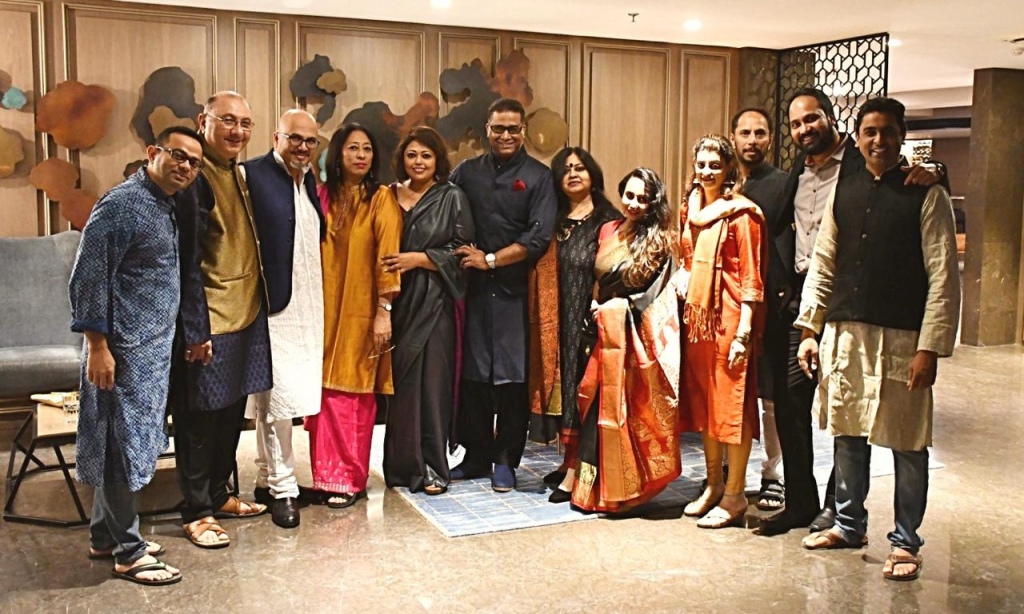
L-R: Swapnil, Neville, Suprio, Doma, Alokeparna, Niloy, Chaitali, Winnie, Reemil, Kiran, Samit, Smikesh. Siddharth, Divya, Ravishankar and Sunaeyaa are missing in the photograph.
Readers, The Nomad Foodie, and SnS Tables will organize many more such food trips- both domestic and international, in the coming months. Join in or if you wanna do a similar trip in Lucknow, get your gang and holler for Suprio!
Itinerary
Friday 14th February
Landing and checking in at Lewana hotel;
dinner with royalty and Qawwali performance
Saturday 15th February
Head to Hazratganj for breakfast of poori sabji jalebi followed by visiting Bada Imambara , shahi bath, Chota Imambara and more.
Head to Nawabeens for a full Awadhi lunch
Bbq evening at Avanbai Mansion at 8.30 pm and Live Ghazal Concert.
Sunday 16th February
(Light breakfast and check out by 10 am)
Head to chowk for food walk:
Idrees ki Biriyani
Raheem ki Nihari
Tunday kebabi
Nimish
Followed by a visit to a zardozi/chikan workshop
Return to MUMBAI/Kolkata by evening flights

